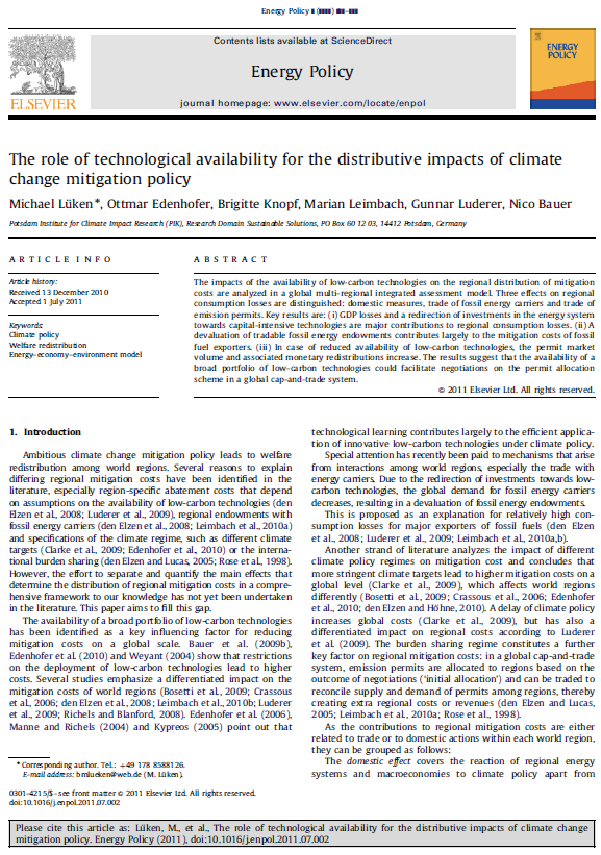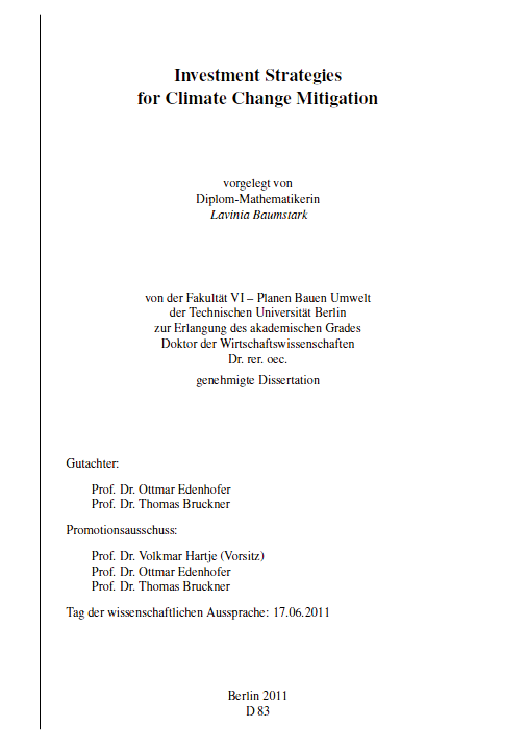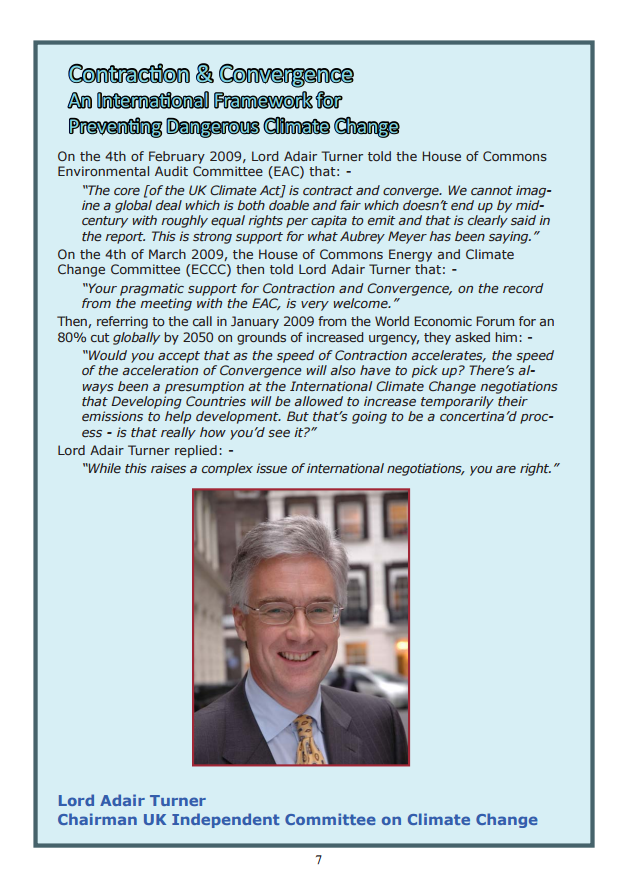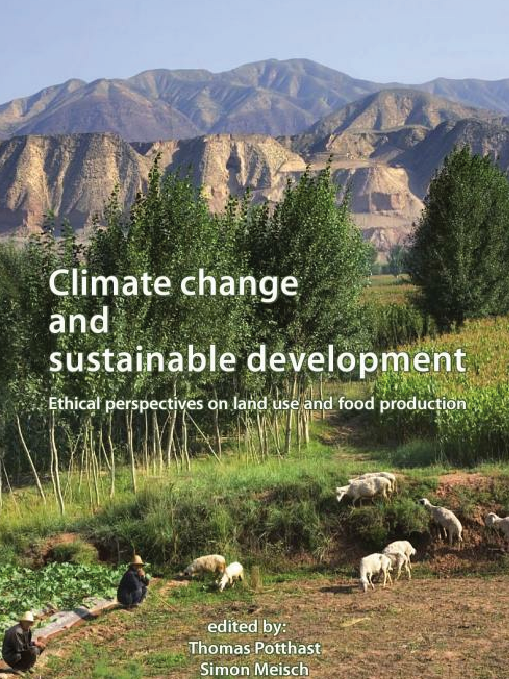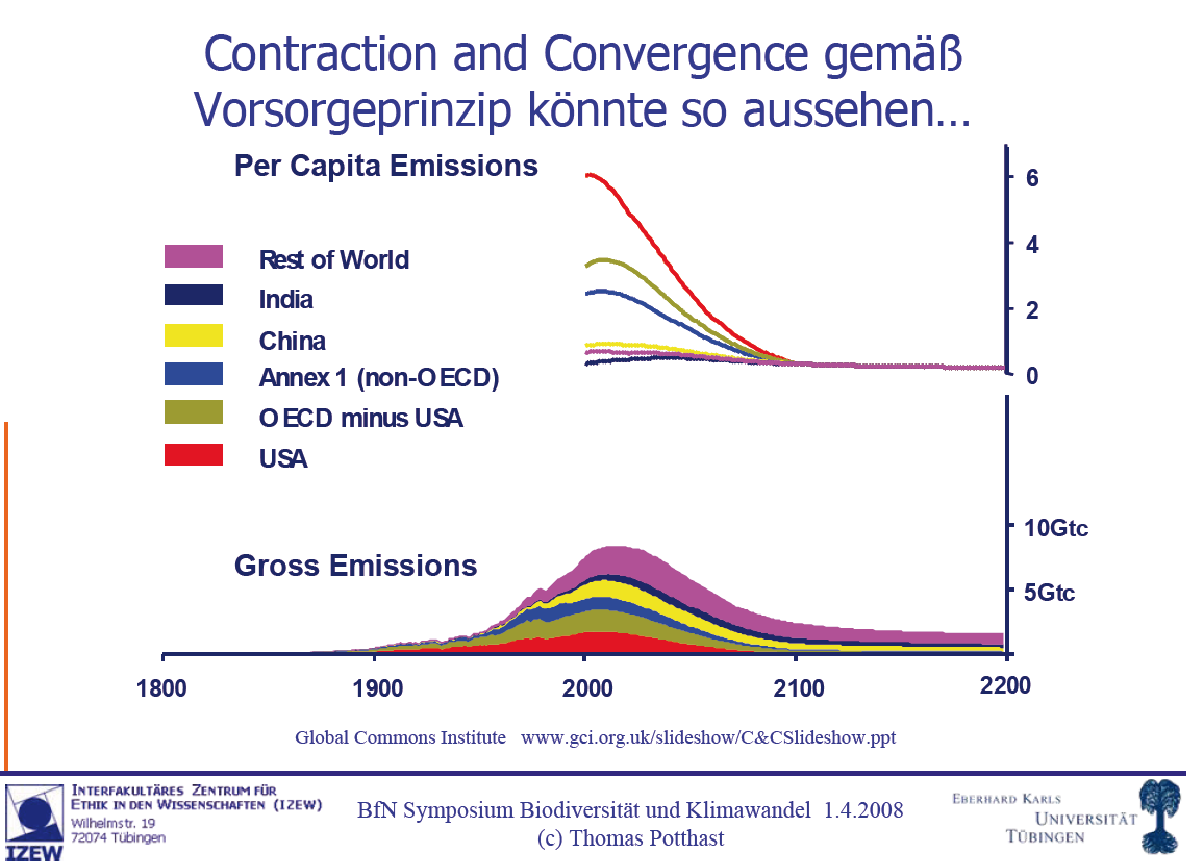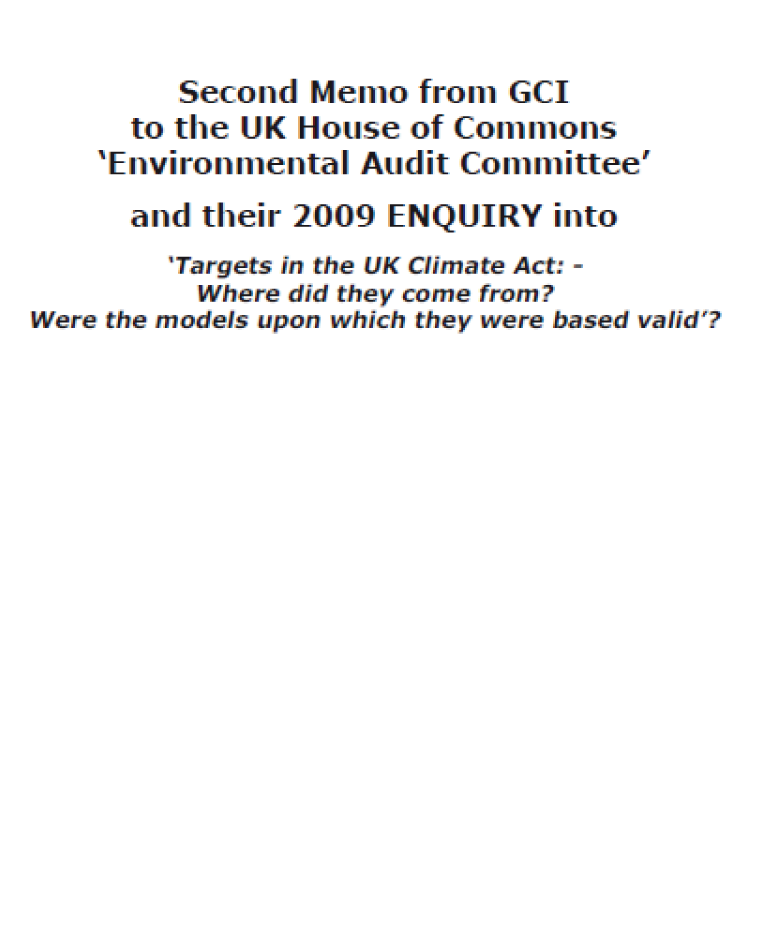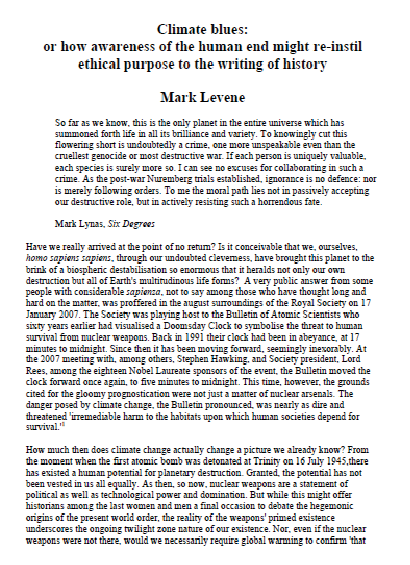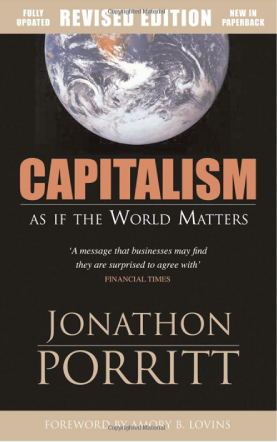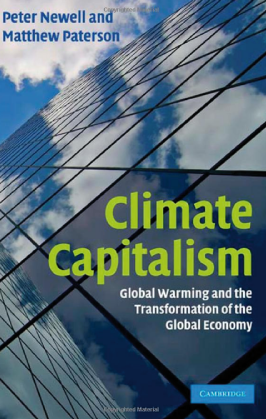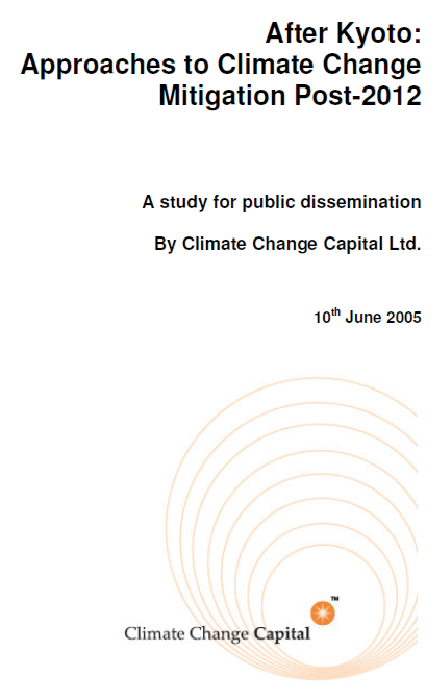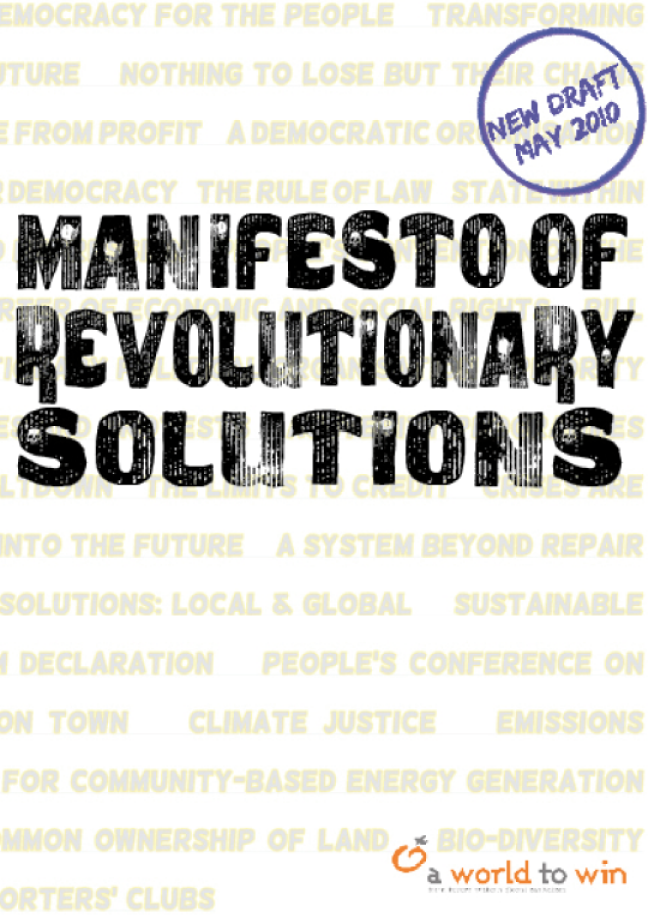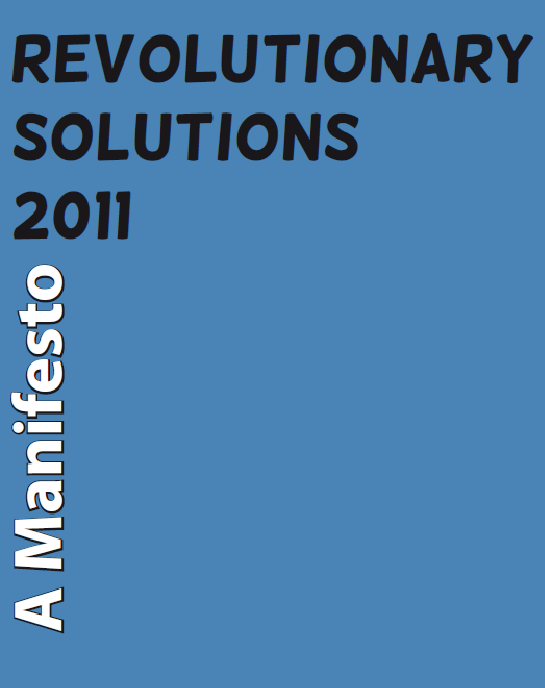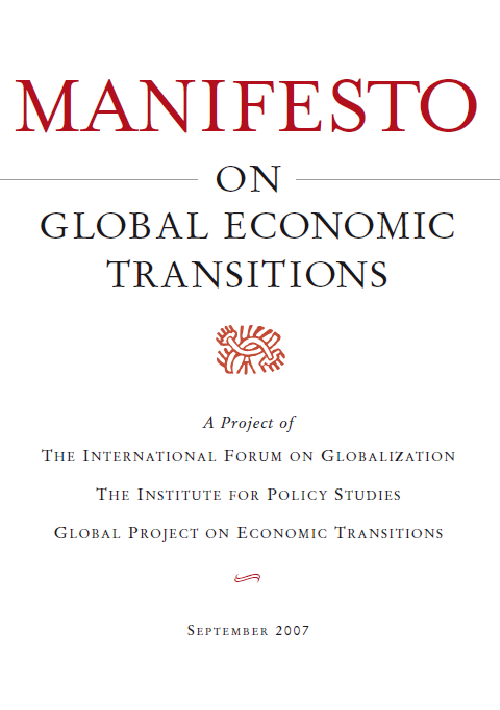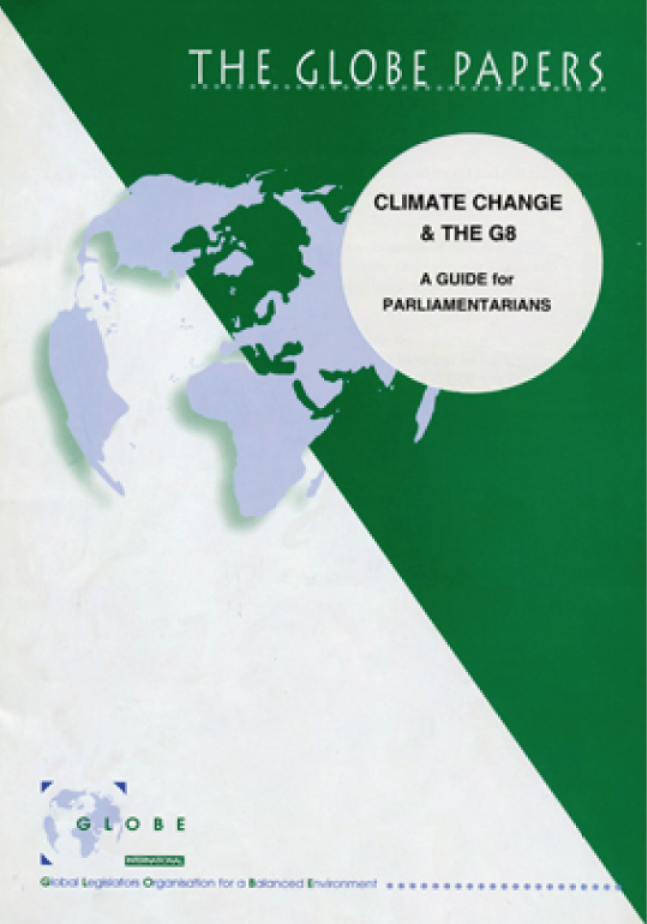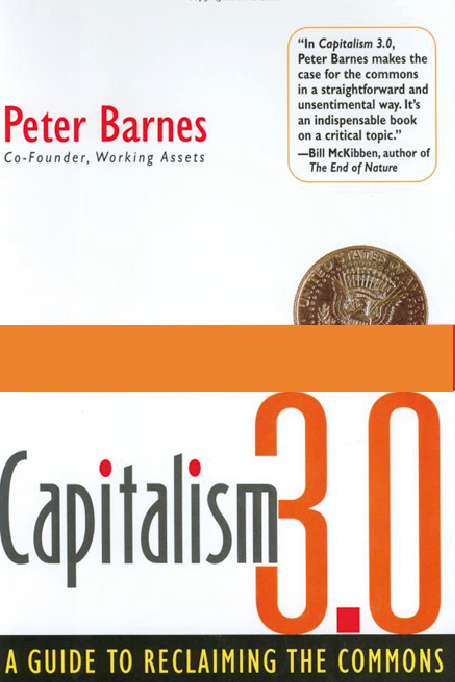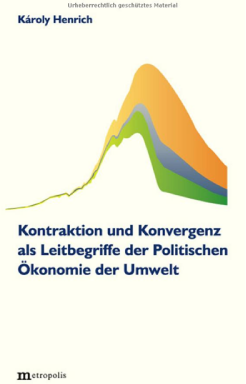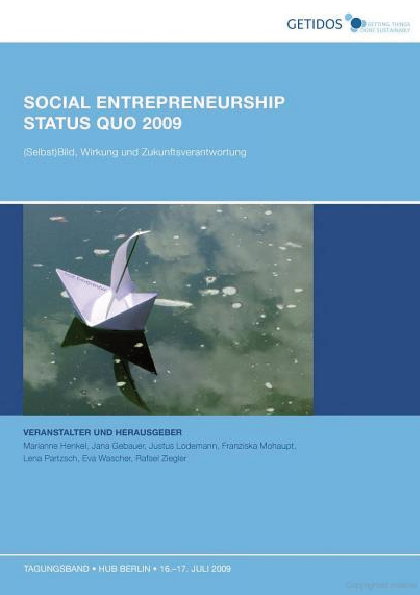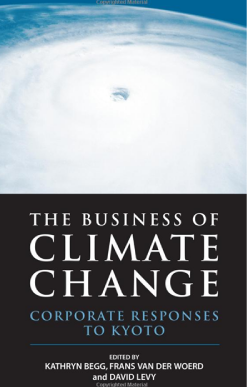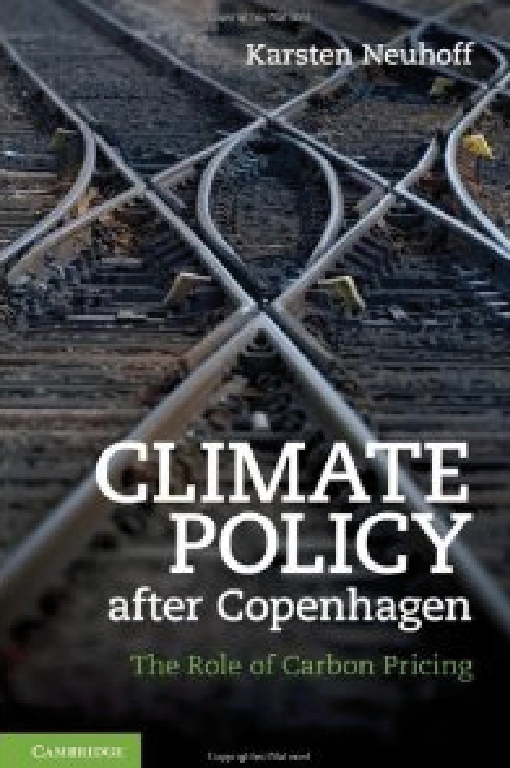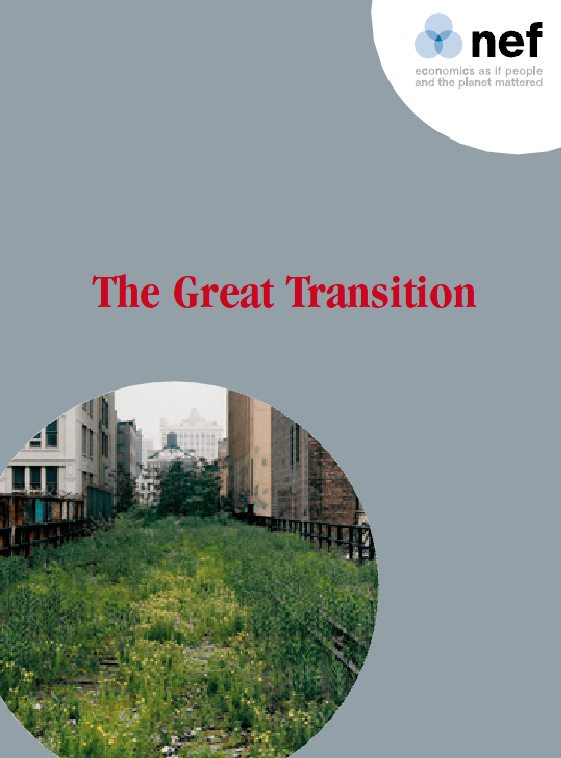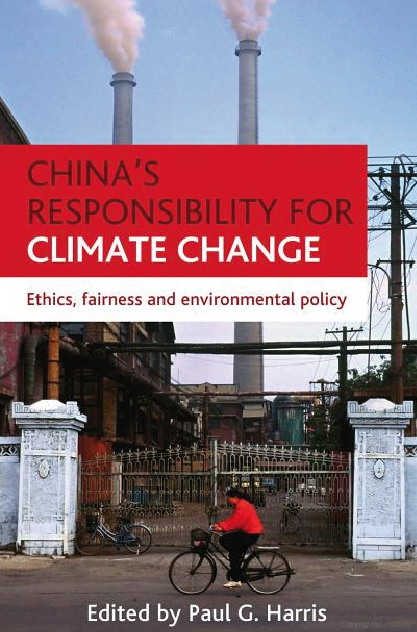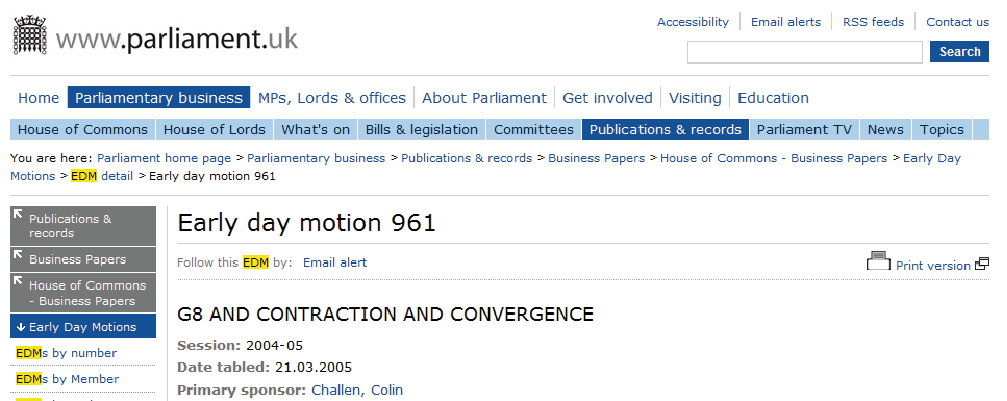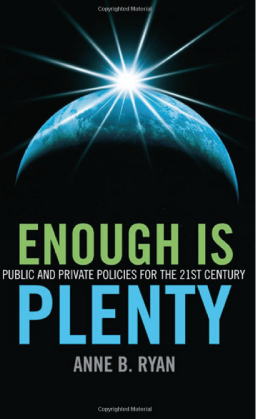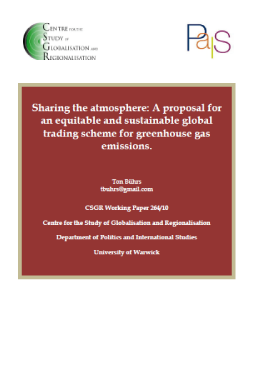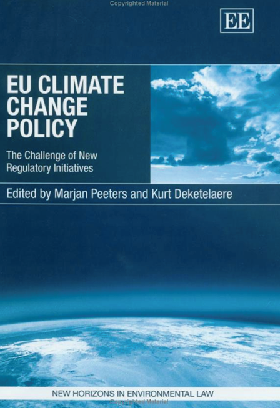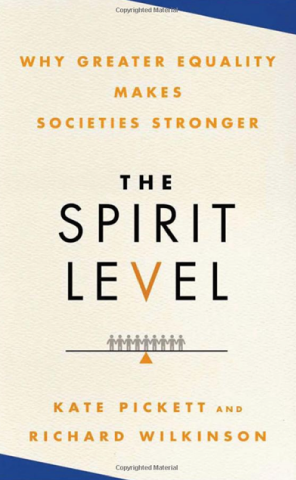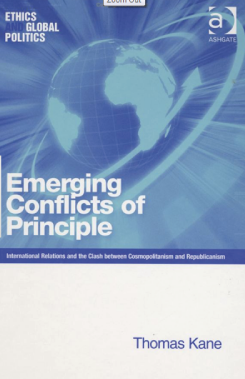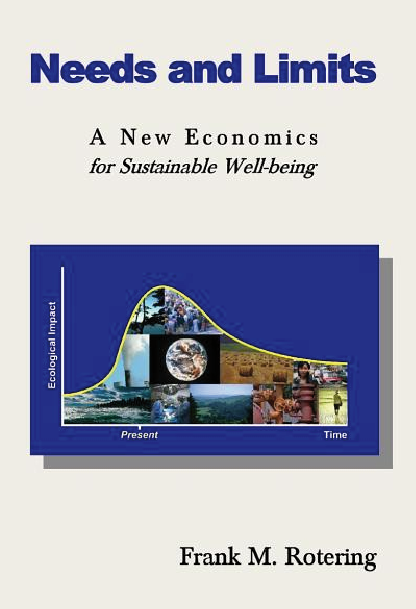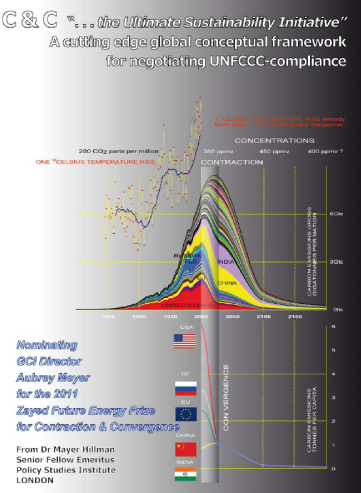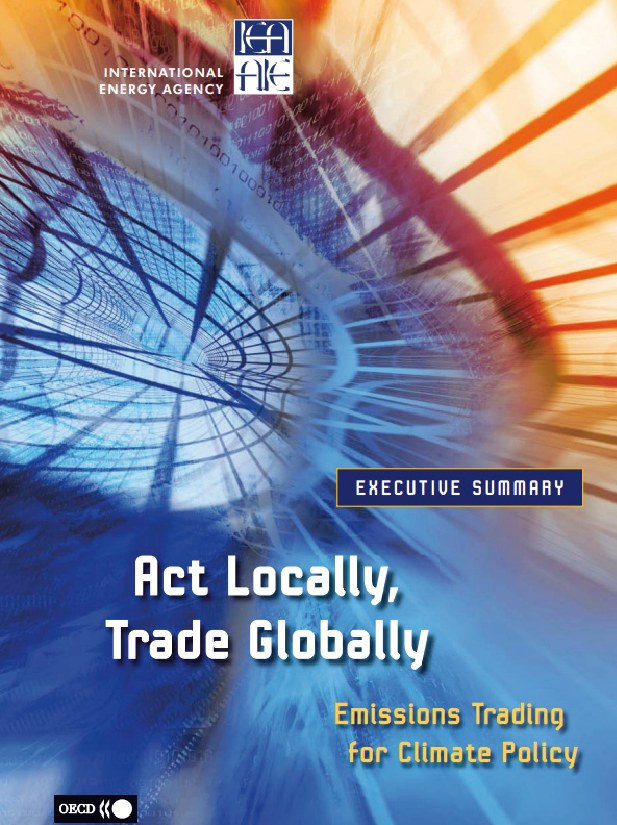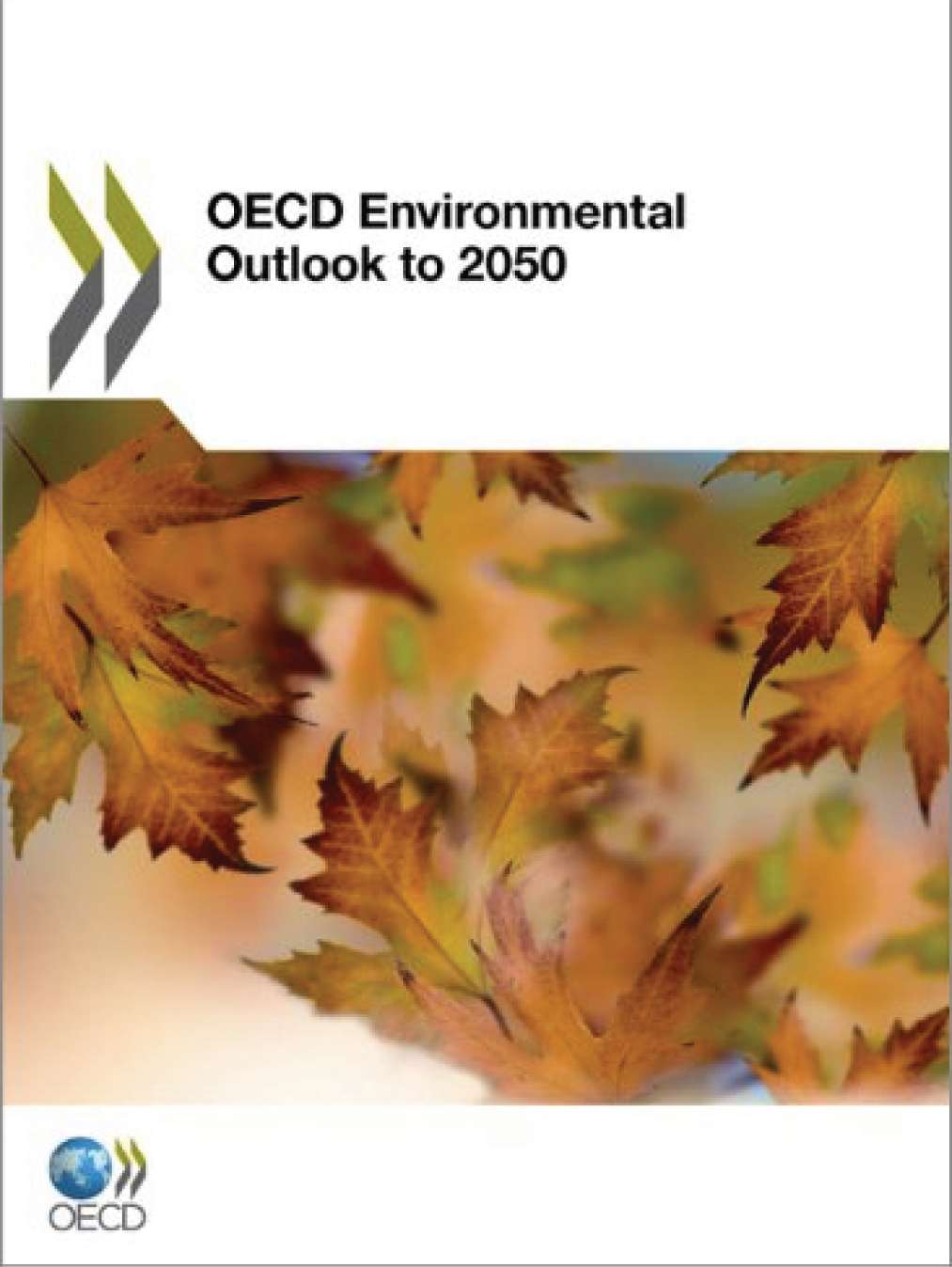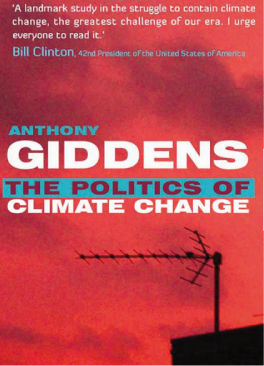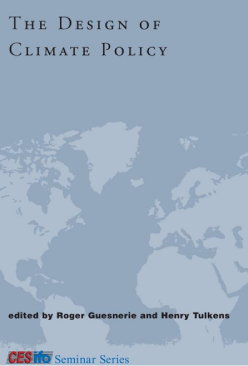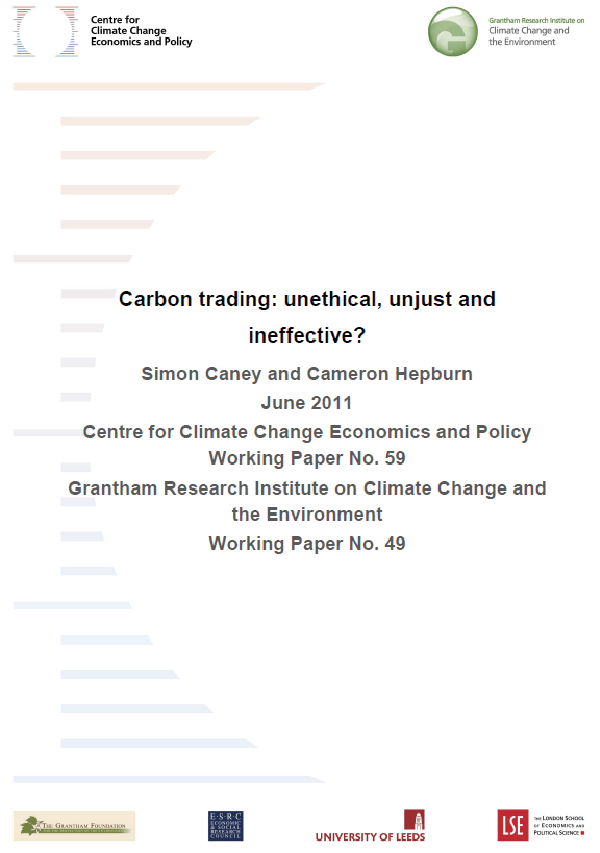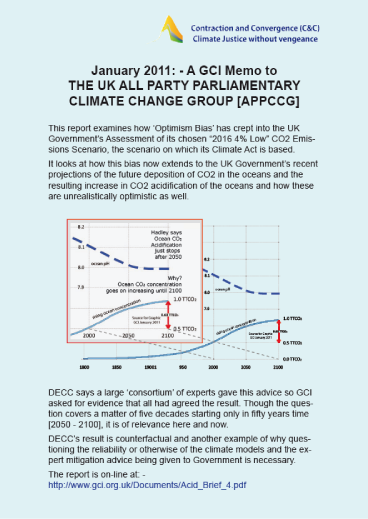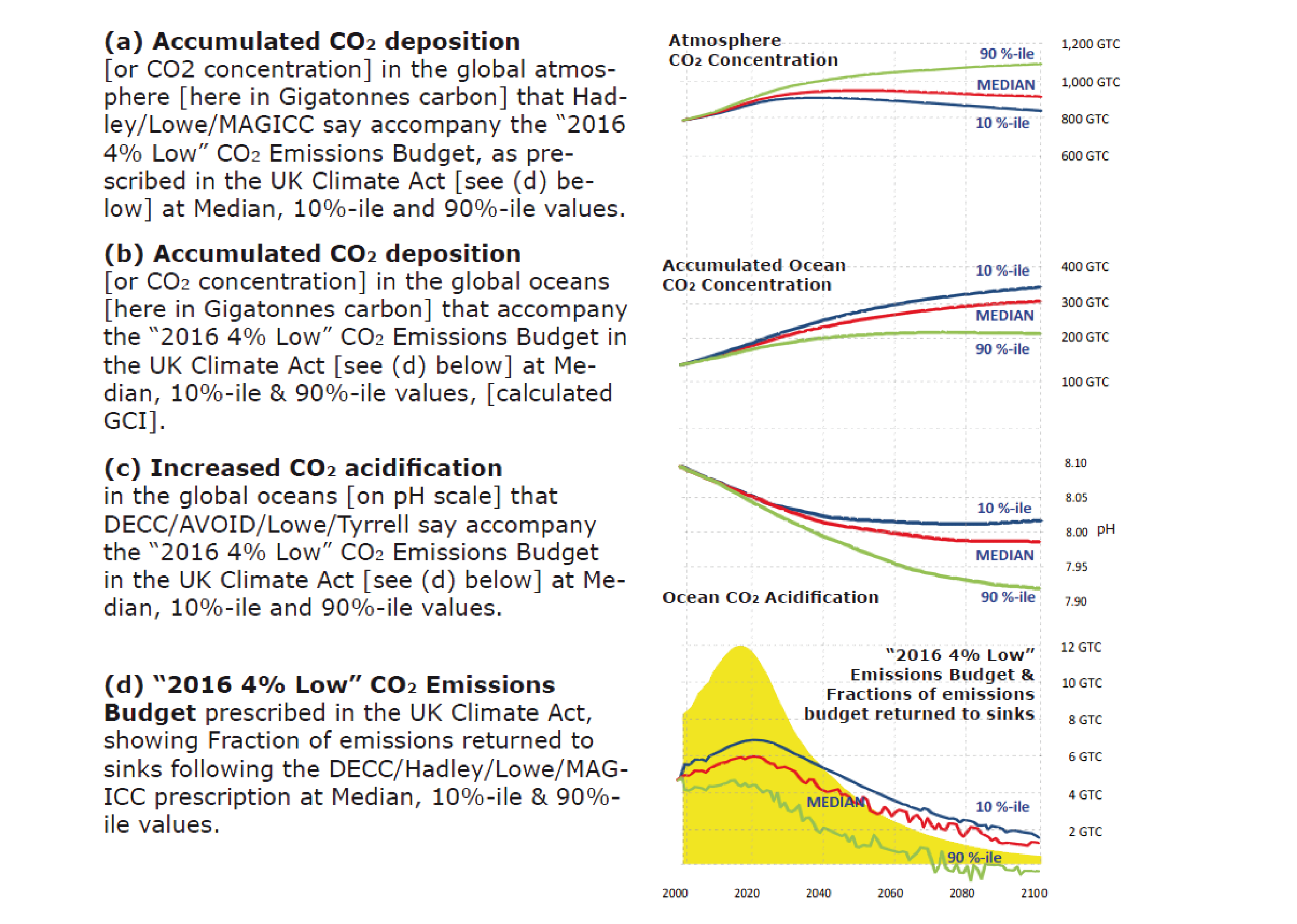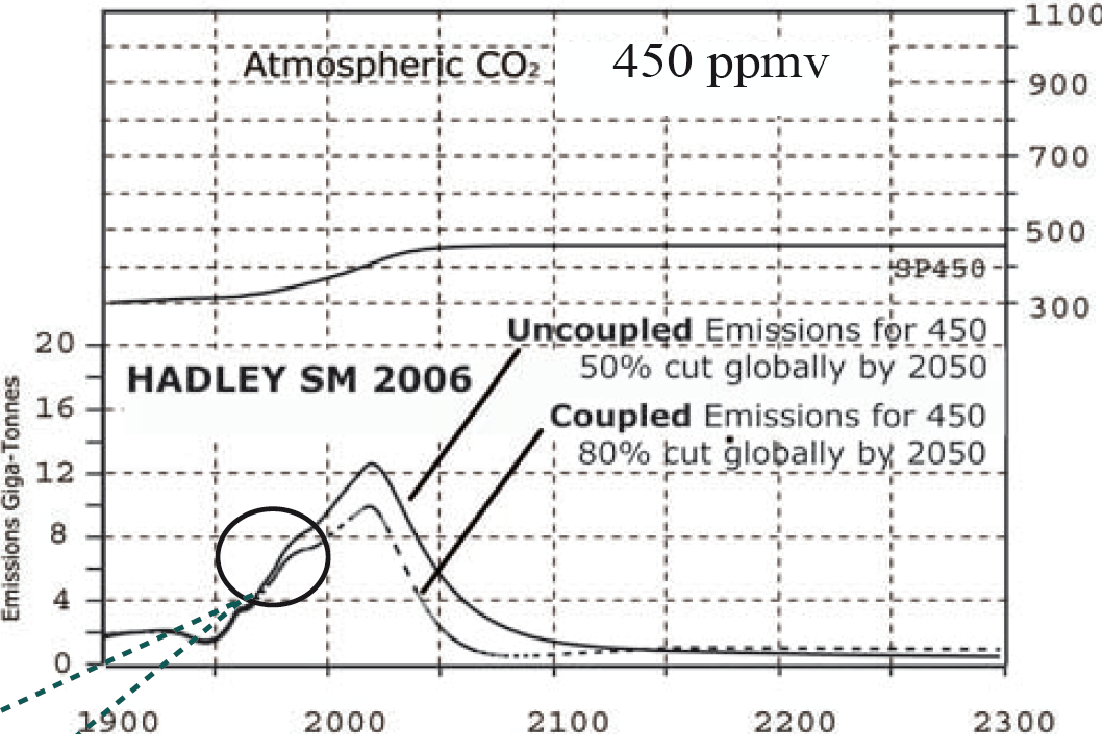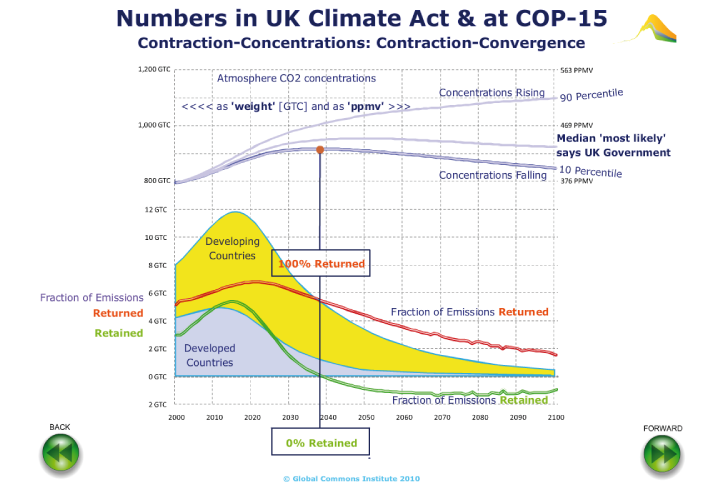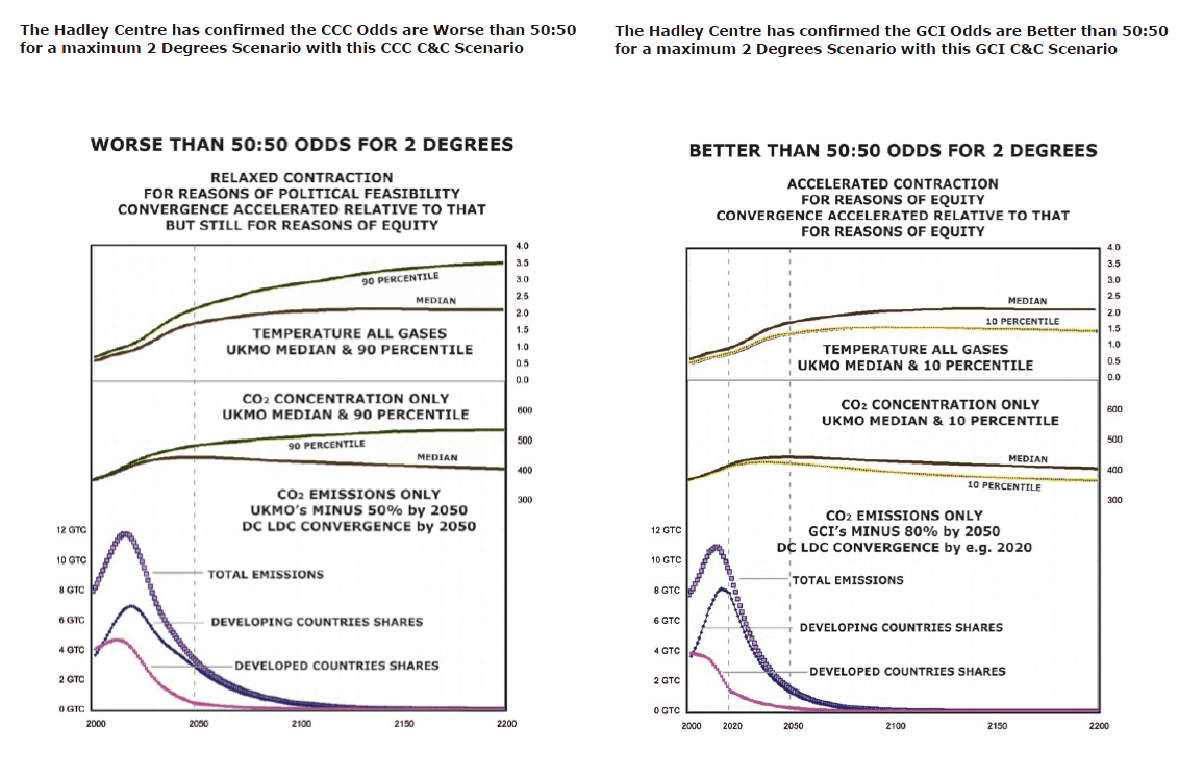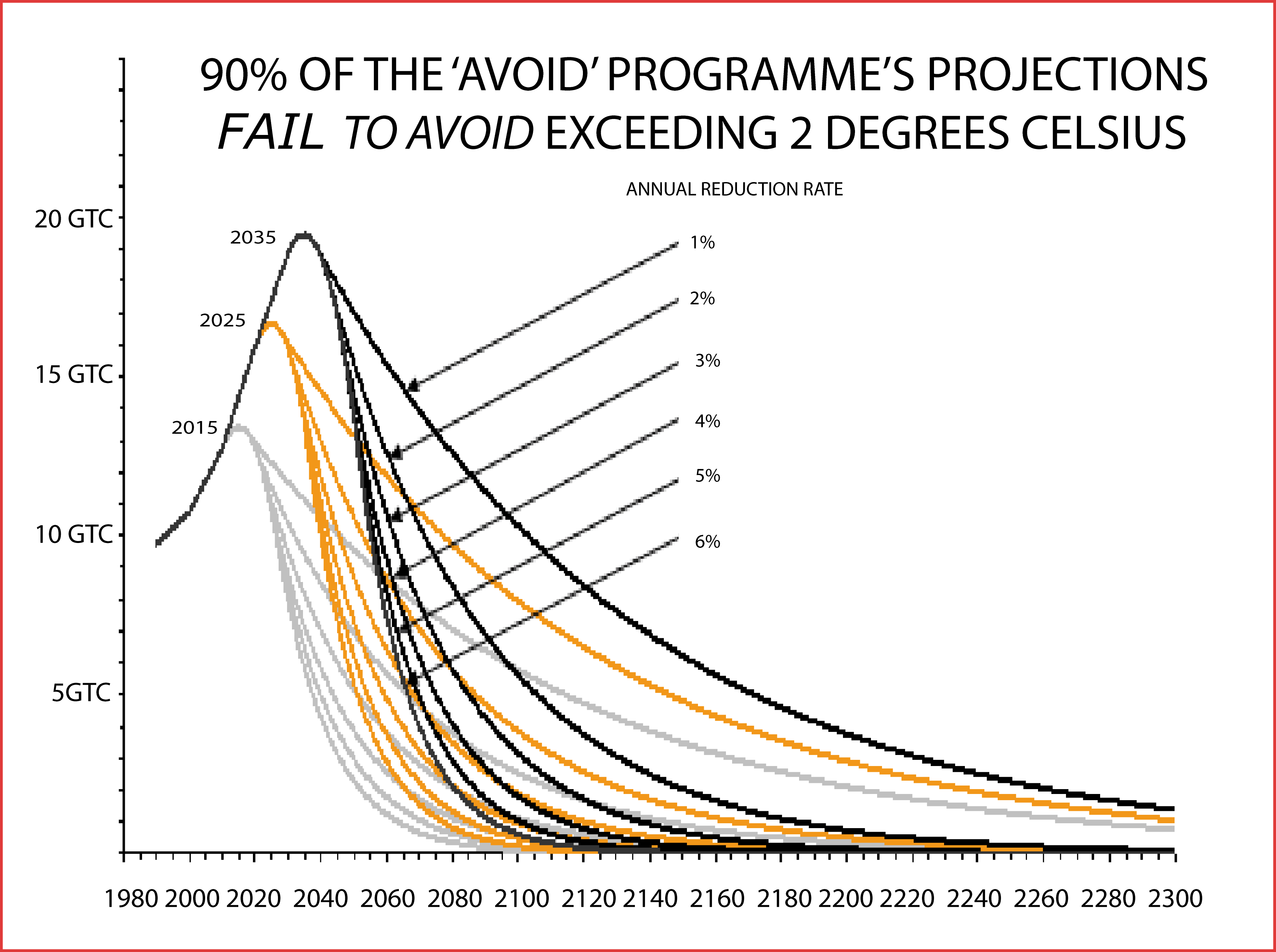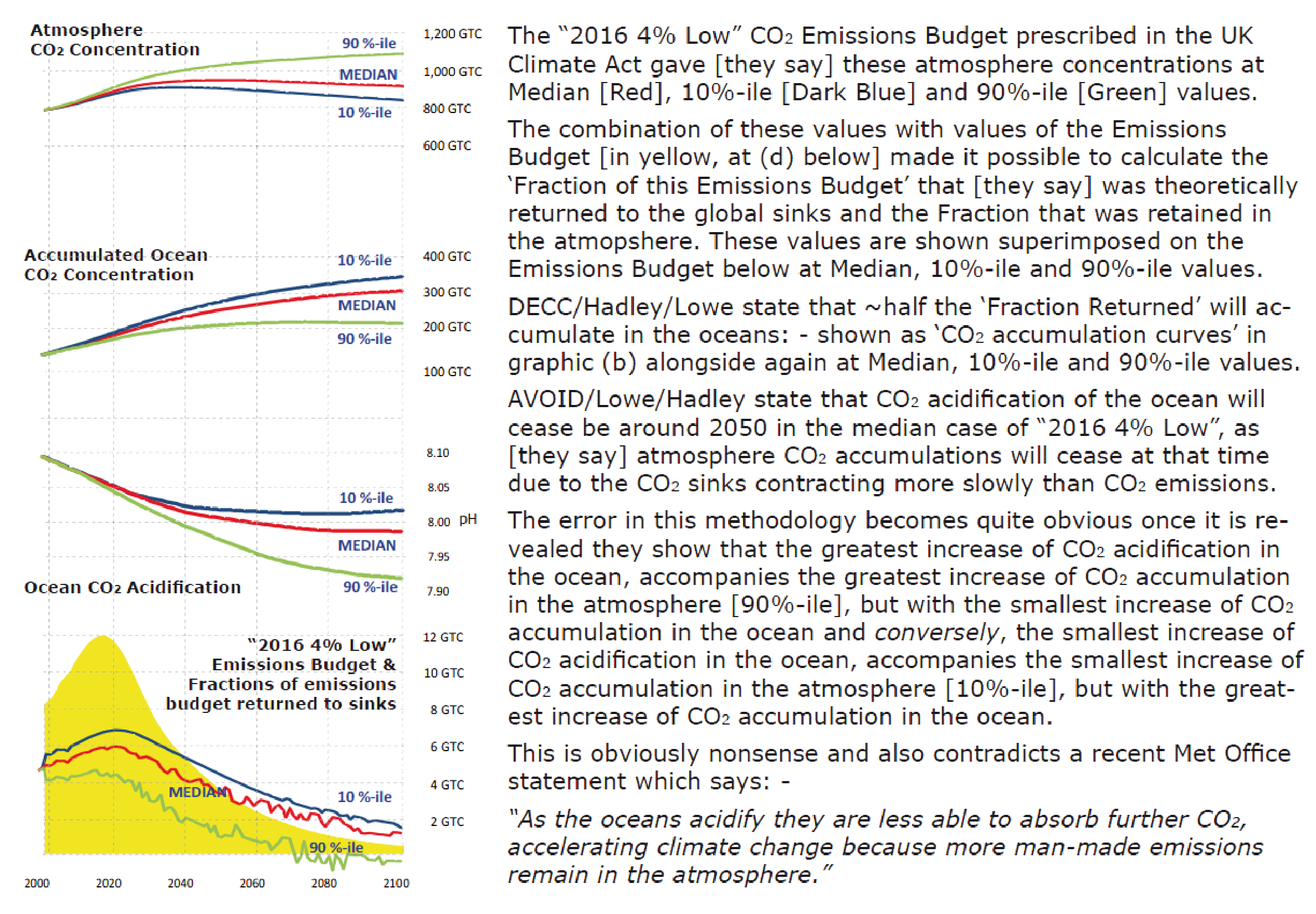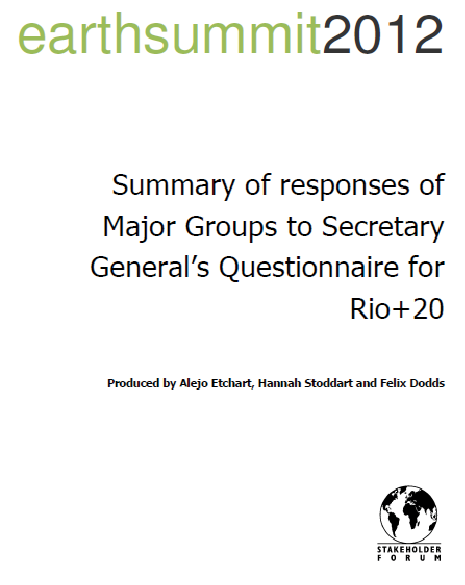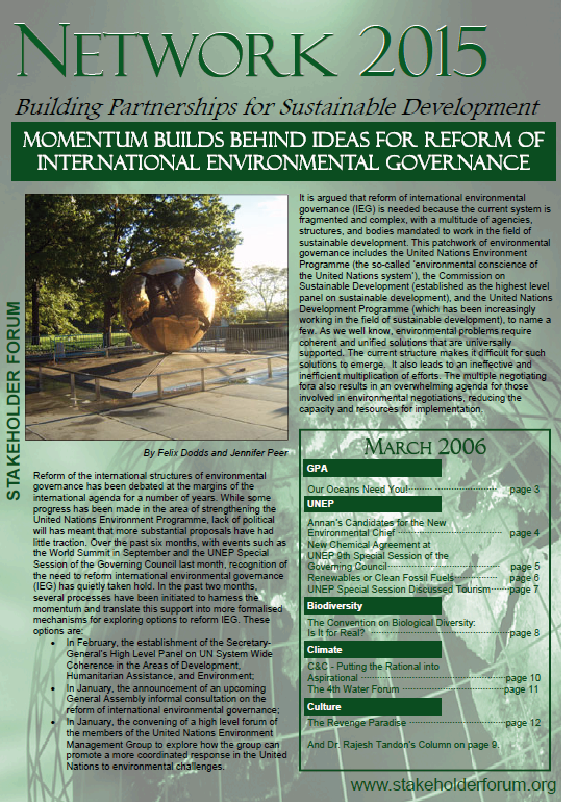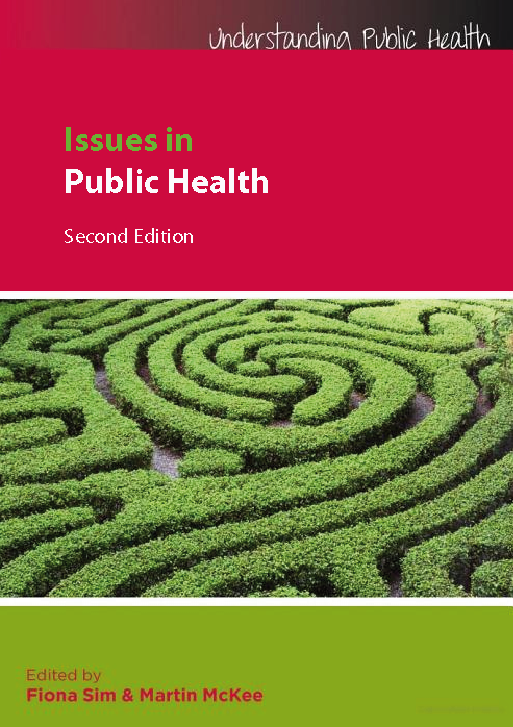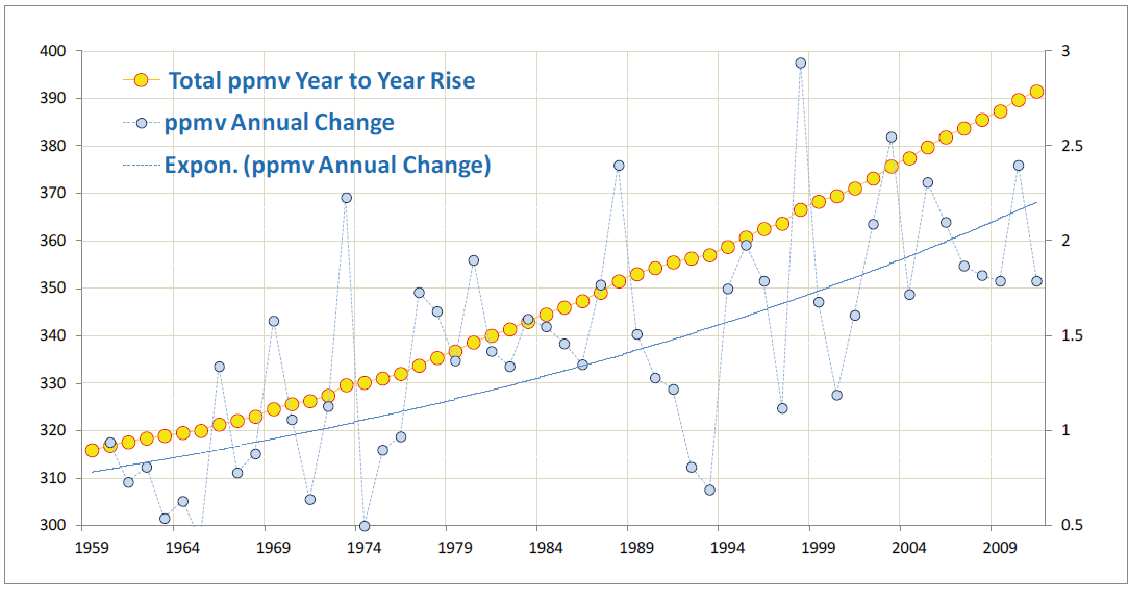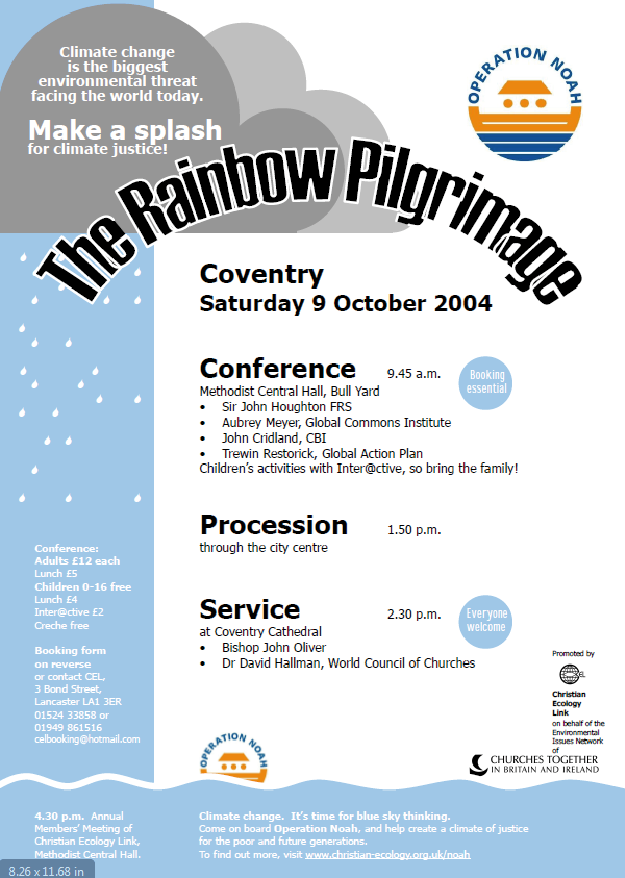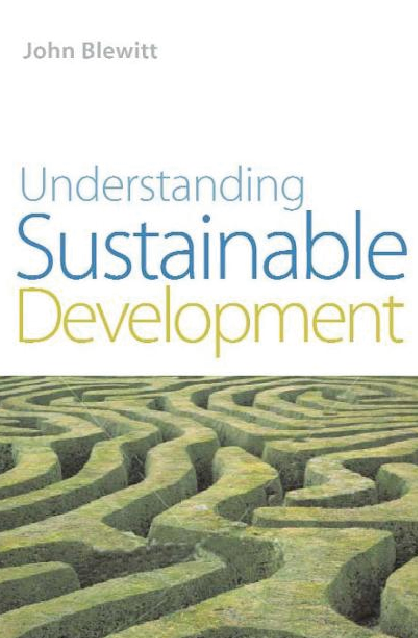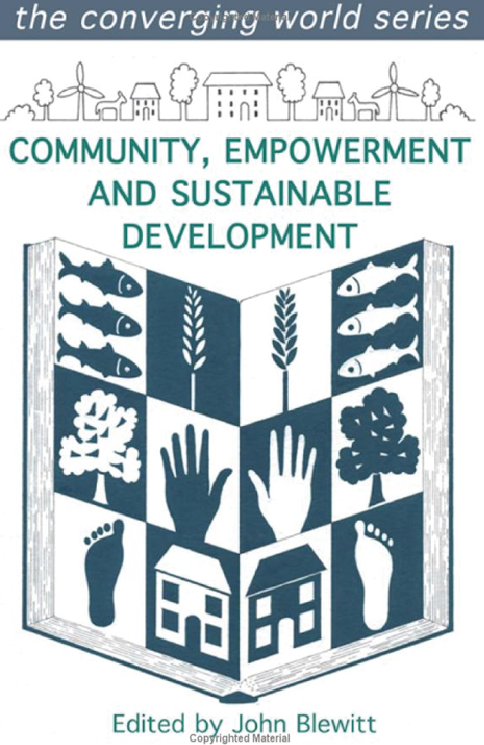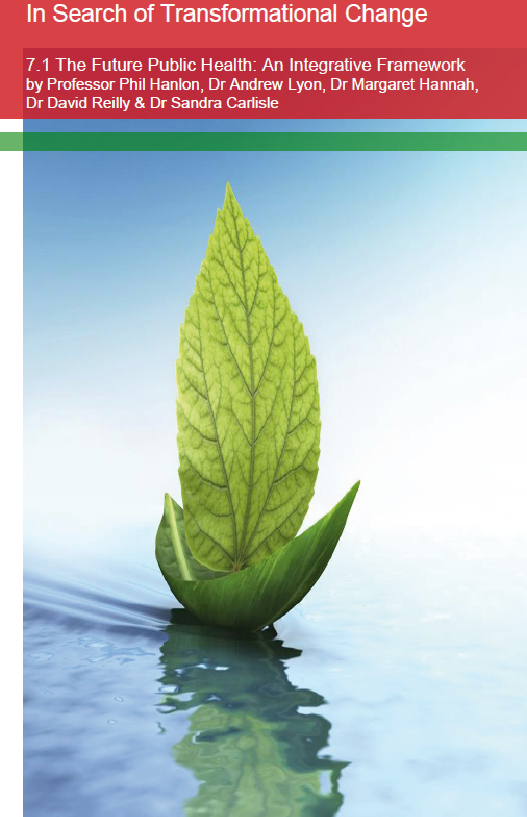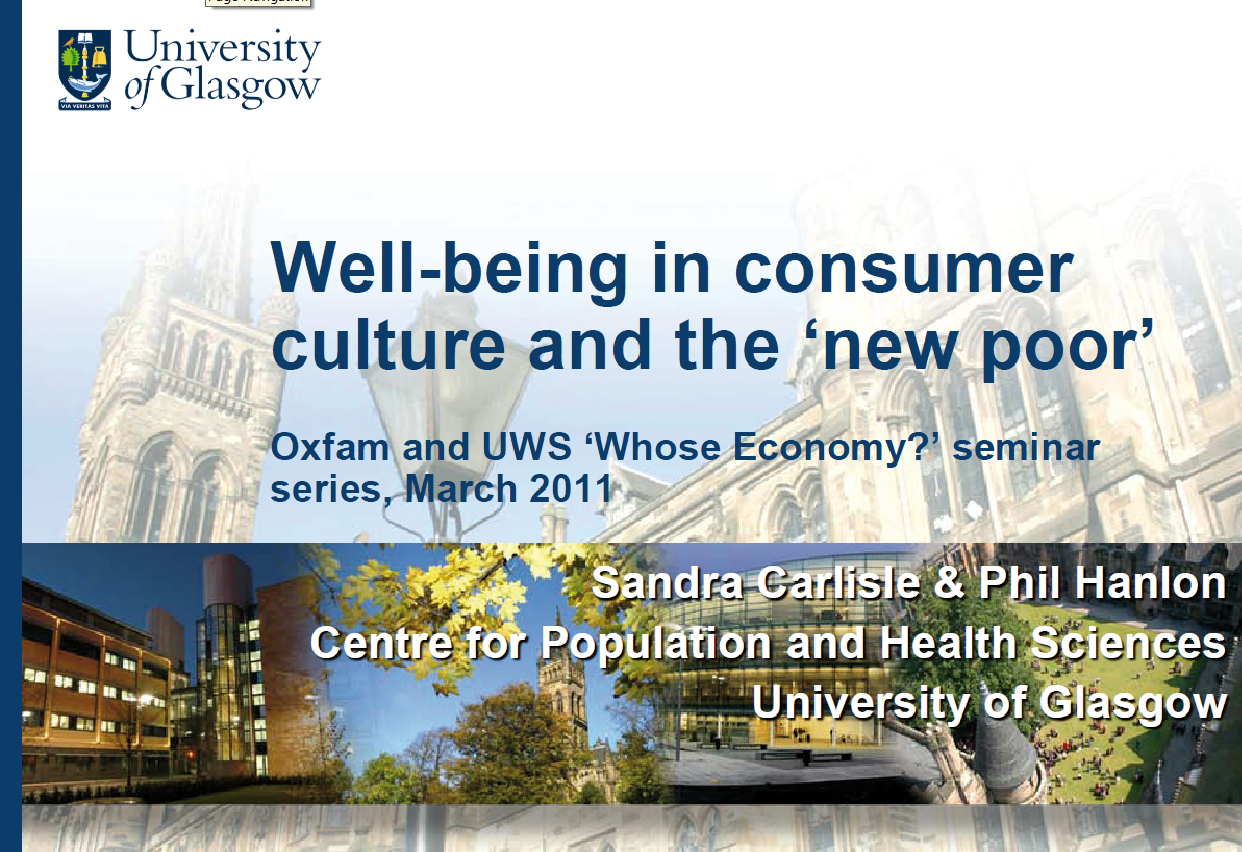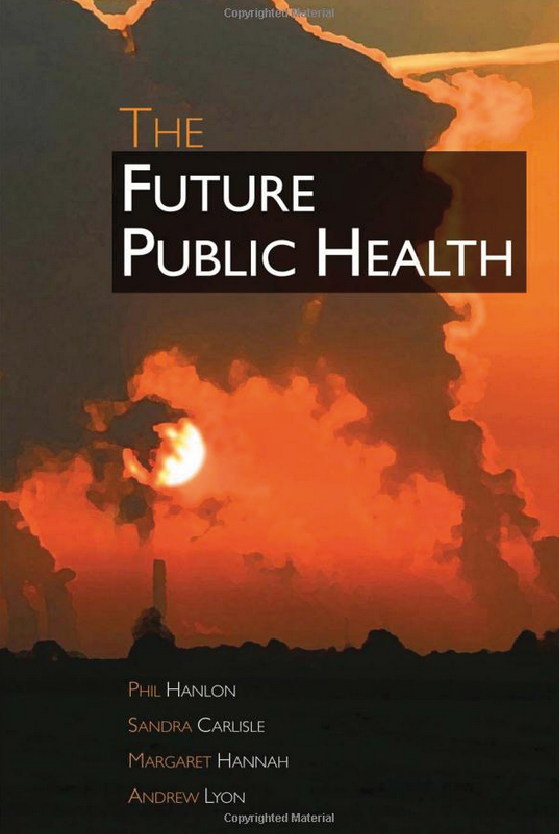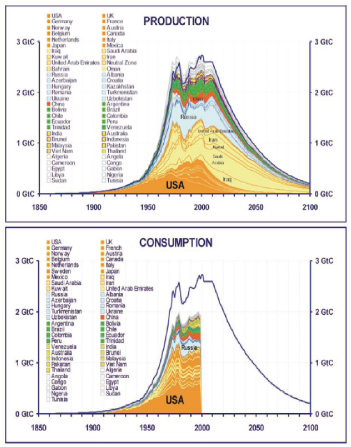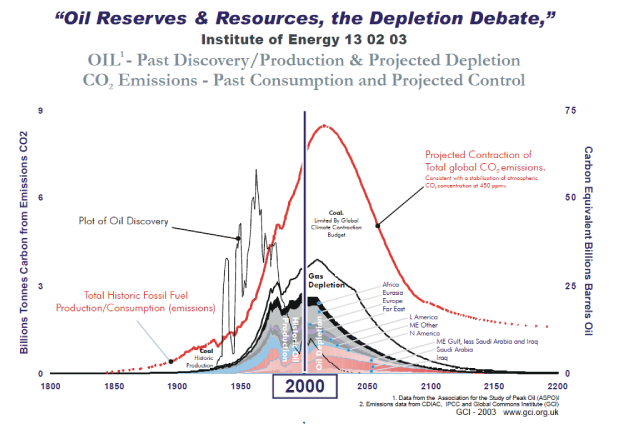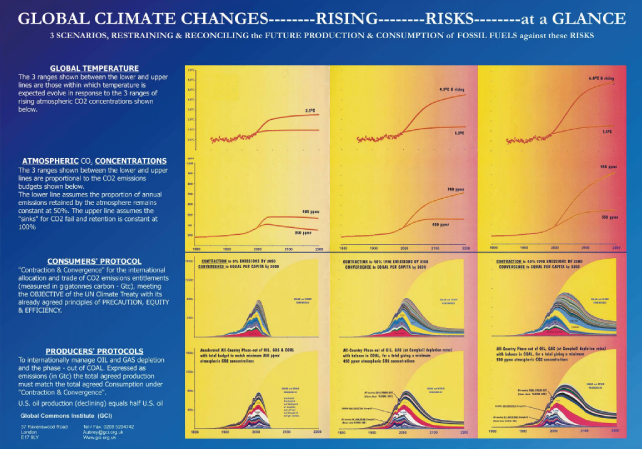We need an international governance structure.
I believe the climate problem is not mainly a technological problem. It is a problem of governance.
Ottmar Edenhofer - taking off his hat as IPCC WG3 Co-Chair at INET
- First of all to be successful we have to define a global carbon budget
- We have to talk about the distribution of property rights in the atmosphere or the climate rent
- We need an institutional framework that allows us to invest the rents in such a way that we can launch transformation pathways
- We need collective action and we could start from the bottom-up for example when we start to think about linking emerging emissions trading schemes
- And we have to accept that we live in a polycentric world and that we have no world government, where we have to think very carefully how to link the different institutions we have.
We consider the following schemes for the initial allocation of emission permits among regions: Reference: the initial allocation is chosen to match the demand for permits in each region. Hence, no trade in emission permits occurs, and permit trade effects on regional consumption losses are zero.
C&C: contraction and convergence allocation scheme (Meyer, 2004). As of 2050, the same per capita emission rights are allocated. Between 2010 and 2050, there is a smooth transition of the regional shares between grandfathering and equal per capita emissions. 2000 is assumed as the reference year for grandfathering.
The Role of Technological Availability for the Distributive Impacts of Climate Change Mitigation Policy
Michael Luken, Ottmar Edenhofer, Brigitte Knopf, Marian Leimbach, Gunnar Luderer, Nico Bauer
Potsdam Institute for Climate Impact Research (PIK)
A common scheme is the Contraction and Convergence principle (Meyer), which postulates that emission rights are allocated depending on the historical share of emissions in the beginning and converge to equal per capita emission rights later in the century.
Investment Strategies for Climate Change Mitigation
Lavinia Baumstark University of BerlinGutachter:
Prof. Dr. Ottmar Edenhofer
Prof. Dr. Thomas Bruckner
Promotionsausschuss:
Prof. Dr. Volkmar Hartje (Vorsitz)
Prof. Dr. Ottmar Edenhofer
Prof. Dr. Thomas Bruckner14 July 2012 - "Venus is such a flirt!" 1,000s of views [and some reactions] to this little 'Tango Penta-dance' . . .14 July 2012 - "What is Contraction and Convergence?" NATURE Climate Change.
Fiddling with climate changeComposer and string musician, turned award-winning environmentalist, Aubrey Meyer tells Nature Climate Change why he is campaigning for countries to adopt his 'contraction and convergence' model of global development to avoid dangerous climate change.
What is contraction and convergence?
It is a structured approach to meeting the objective of the United Nations Framework Convention on Climate Change (UNFCCC) to reduce the concentration of greenhouse gases in the atmosphere to a level that is both safe and stable. Contraction refers to the global reduction in greenhouse-gas emissions that is needed to prevent dangerous climate change. Convergence of the world's nations on an equal per-capita entitlement to the global emissions budget is not just the right way to get a global agreement over this contraction, it's the only way.
Why is the convergence element so crucial?
Without convergence, you will never get contraction. It's as simple as that. The atmosphere is a global commons and everyone has an equal right to emit greenhouse gases into it. If you don't stand for that, you have to defend inequality, which the majority will obviously reject. If that happens, contraction will be too little too late and runaway climate change will be the inevitable outcome. Climate change is an issue of survival, and equity is the price of that survival.
How did you come to be interested in climate change?
Up until the late 1980s I hadn't cottoned on to green issues at all. I grew up in South Africa, where I studied music at school and university. After I came to the UK in 1968, I spent the next 20 years as a professional musician and composer. I played the viola in the London Philharmonic Orchestra, which was wonderful, and wrote a fair amount of chamber music and two ballet scores. One of these � for the Royal Ballet � did spectacularly well, touring around the world to rave reviews. I was looking for the subject of a musical when I read about the murder of Chico Mendes � a Brazilian social activist trying to protect the Amazon rainforest. It was perfect material for a musical, but the more I researched the issue, the more horrified and dumbstruck I became. I was knocked sideways.
I stopped playing music. I joined the Green Party and, in 1990, with several like-minded individuals, founded the Global Commons Institute. I sold my viola, specifically to buy one of the first desktop computers. It was like cutting off an arm, but I didn't think twice about it and I began to use spreadsheets to analyse and visualize climate data.
How does a professional musician get his head around mathematical modelling of climate change?
A musician never consciously goes round doing mathematics, but music is intensely mathematical. You have a constant length of string at a constant tension. If you halve the length of that string you double the frequency at which it vibrates so you get an octave. If you cut it in thirds you treble the frequency and get an octave and a so-called perfect fifth. This principle, first articulated by Pythagoras, is the entire basis of playing in tune and in time.
What was the reaction to the contraction and convergence model when you first aired it?
At COP2 [the second Conference of the Parties to the UNFCCC] in Geneva in 1996, we put up a huge poster-sized graphic of the model � the response was tremendous. It really was. In the run-up to COP3 in Kyoto, I was invited to Washington DC and to Beijing to explain the contraction and convergence model in detail. I was bloody terrified. At that stage, I was still seen as a cute musician, a kind of a drop-out. I didn't know what the hell I was doing in the middle of this manic negotiation except that I was really frightened about the issue. It felt a bit like South Africa under apartheid, with a kind of privileged enclave within a much wider sea of underconsumption.
What happened in Kyoto in December 1997?
In the final session of negotiations, China, India and the Africa group all came out strongly in favour of contraction and convergence. The United States agreed. At which point, the chairman suspended the meeting out of the blue. So although the Kyoto Protocol paved the way for emissions trading between developed and developing nations, it fell short of addressing the rate for convergence on equal per-capita carbon entitlements. From that day until this, we've had this stupid, fruitless row, with countries simply plucking emission-reduction targets out of a hat. This has simply led to the sum of ill-will and reluctance, and is nothing like the contraction of emissions that's needed to achieve compliance with the UNFCCC objective.
If we pursue that model any further it'll be clear to everybody that we haven't got a hope in hell. The reason for pushing contraction and convergence is not simply because it is nice and it is fair, but because we really don't want to be melted down in a runaway damage curve that will inevitably follow any further disagreement.
Given this scenario, why has there been so little movement on convergence since the 1990s?
There has been a complete refusal to negotiate over the rate at which nations should converge on equal entitlement. At COP15 in Copenhagen in 2009, the developed nations put forward the Danish Text, which prescribed convergence to equal per-capita entitlements by 2050, completing contraction by 2100. Such an arrangement effectively ignores the interests of developing nations, who would like to see convergence on equal entitlement with immediate effect.
That's equally unrealistic isn't it?
So there has to be a negotiation. In other words, the date for convergence to equal entitlement needs to be somewhere between now and 2050. The states need to engage. How about convergence by 2030? Would that be a suitable compromise? This is absolutely what is needed at COP17 in Durban.
Isn't it understandable that western politicians should be reluctant to enter into such a negotiation?
It is completely understandable. For a developed economy, rapid convergence is going to be painful. Our well-being, our salaries and our future hopes are all tied to more wealth rather than less wealth. We are subtly loyal to the system that has fed us so well until now. It would be nice to imagine that we can continue to grow gross domestic product while reducing greenhouse-gas emissions. But the two are extremely closely linked and nobody's ever achieved it anywhere.
How about growing solar, wind, hydro and other renewable technologies?
Investing in renewables is the only conceivable way to fire up your economy without increasing emissions. The renewable sector is very active, but it is continually frustrated by the fact that the commitment to fossil fuels is so strong, so multinational and so dug in. The emergence of a truly effective renewable-based economy is not going to be an accident. It's not going to be the result of talking up technology and getting the banks to invest a bit more money. It will only be the result of a really strategic, coordinated, structured, determined, goal-focused process such as contraction and convergence.
Multinational negotiation on climate change doesn't have the best track record. The kind of global consensus you're asking for is completely unprecedented.
It responds to a completely unprecedented global challenge. We've never remotely faced a threat like this. It is orders of magnitude greater than all the other problems we've faced. The negotiators, the civil servants, the media and the public are all horribly out of touch with the basic arithmetic. If we enter a phase of runaway climate change � if the terrestrial and oceanic carbon sinks turn to sources � it's curtains for us.
Why do you think contraction and convergence will save us from dangerous climate change?
The whole essence of contraction and convergence is conflict prevention. We don't want this to end in nations tearing each other's throats out. Contraction and convergence is Mandela � it's truth and reconciliation, and justice without vengeance. I think it is achievable because it's simple, it's rational, it's communicable and there's a very good reason to do it.
Interview by Henry Nicholls
Aa freelance journalist based in London, UK, and the author of The Way of the Panda (Profile, 2010).14 July 2012 - "C&C sets the principle - a global norm." EMBO Reports Donald Bruce Director Edinethcis
How sustainable are we? Facing the environmental impact of modern society
Donald BruceIntroduction
Part of being human is our capacity to transform the natural world around us. Although we rightly rejoice in our scientific knowledge, we are increasingly aware of the damage that we are causing as our technological powers have gone beyond harnessing forces and resources locally, to controlling and redirecting on a massive scale. If all the peoples of the world consumed resources at the rate of the current richest nations, key systems of the planet could not sustain the burden�for example, the climate, fresh water and soil. No longer can we rely simply on our ability to rescue ourselves technologically from problems of our own creation. Our past greenhouse gas emissions have set in train climatic consequences that we cannot stop; the best we can do is to put in place countermeasures to reduce emissions by 60�80% by the year 2050, to keep the increase in global temperature within tolerable bounds. The UK Royal Commission on Environmental Pollution Report and the Stern Review indicate the large scale of the measures needed to achieve this (Royal Commission on Environmental Pollution, 2000; Stern, 2006).
"No longer can we rely simply on our ability to rescue ourselves technologically from problems of our own creation."
One of the most urgent needs facing global civilization is to find models by which to use our powers sustainably and, in turn, the values that should underlie them. I would argue that, among the many religious and cultural understandings of the human condition, the ancient texts of the biblical book of Genesis offer an important clue. Its two parallel accounts of creation describe humans, contrastingly, both as apart from the rest of nature, endowed with a task to “subdue the earth and fill it” (Genesis 1: 27â��28), and yet also as a part of nature, set in a garden “to work it and take care of it” (Genesis 2: 15). These metaphors describe an inherent tension in our role as humans, as both the interveners and conservers of nature. The role of the intervener was emphasized in the ideas of the Enlightenment and embodied in the Industrial Revolution. The role of conserver was idealized in eighteenth century Romanticism and is expressed in the current environmental movement. The stakes are now much higher. The choices that we make to handle this tension in the twenty-first century will be crucial, not only for European civilization, but also globally.
There is an important relationship between technology and society and its values. Technologies are not neutral: they are a product of the society that created them and embody some of its values, aspirations and concerns. As a new technology becomes embedded in a society, it alters the practices, expectations, aspirations and values of that society to a greater or lesser extent, and often unconsciously. This synergic relationship has been referred to as a tacit social contract and creates the conditions for the acceptance of a new technology (Bruce, 2002).
If the values and goals of the inventor are close to those of society, and if the invention anticipates the wishes of society, it is likely to be welcomed, as in the example of the mobile phone. By contrast, if the aims and values of the inventor do not correlate with the values and concerns of the society�as with genetically modified (GM) crops�the technology can create conflicts. In some cases, there might also be tensions between conflicting values within a society�as with stem-cell research or nuclear power�or at a more local level�opposition and support for a proposed wind farm, for example.
"One of the most urgent needs facing global civilization is to find models by which to use our powers sustainably and, in turn, the values that should underlie them."
Historically, there have been periods when technological revolutions have cohered with changes in thought or culture. In 1517, the German monk Martin Luther (1483â��1546) nailed 95 bullet points to a church door in the small town of Wittenberg, Germany. This was a standard way of publishing ideas for discussion and debate at the timeâ��a sixteenth century ‘blog’ of sorts. However, the printing press, which had been invented over 50 years earlier, allowed his ideas to spread over Germany within one month and across Europe in three months. The combination of moveable type and the recovery of the belief that human beings were reconciled to God through God's grace and not through religious rituals, created one of the most important revolutions in history. Similarly, the Industrial Revolution coincided with the Enlightenment idea of human autonomy and mastery over nature. The somewhat anarchic user-driven style of the Internet resonates with the condition of post/late-modernity in which it emerged.
As technologies have increasingly manipulated the most basic components of life, they have impacted on fundamental human values. If the values expressed in some ‘disruptive’ technologies are not shared by society at large, but reflect only powerful elites, this might lead to protests. The opening meeting of the European Network of Excellence in Nanobiotechnology (Nano2Life) in Barcelona, Spain, 2004, was greeted with graffiti that equated nanotechnology with fascism. This might be a minority view, but it illustrates the different understandings of what is deemed to be ‘progress’ within European society.
The Enlightenment fostered an implicit belief in progress through science and technology in order to improve the human condition in its widest sense. This idea of progress is frequently cited as self-evident. Yet progress can be interpreted differently through the lenses of various world views and ‘views of the world’ (Fig 1).
The different ‘lenses’ through which societies view progress.
.
The scientist ideally emphasizes progress in knowledge, to be harnessed in ever more ingenious ways. In reality, reputation, funding and publication pressures are also important drivers. Governments typically frame technologies economically, based on their capacity to generate wealth and jobs, and emphasize the supreme value of competitiveness in a global market place, over quality of life (European Commission, 2002; Scottish Executive, 2001). The dominant economic model equates progress with sustainable economic growth in a free market, although some commentators consider such aspirations to be a contradiction in terms (Porritt, 2008).
"Technologies are not neutral: they are a product of the society that created them and embody some of its values, aspirations and concerns"
For many people, however, progress is about much broader human aspirations. It might be addressing global problems such as the environment, social justice and human suffering, through sustainable food supplies, water, medicine or renewable energy. Here, technology is a tool at the service of humanity rather than the engine of macroeconomic ambitions. Its advances must redress stark global inequities, and be balanced by the care for our fellow humans and a fragile environment. Others understand progress personally, choosing whatever technologies they wish to use to improve their own quality of life. Religious belief systems interpret progress vis-� -vis God-given limits, and the effects of technology on the spiritual and social health of people and communities or the non-human environment. By contrast, transhumanism believes in a future vision, which some consider to be quasi-religious, where technology extends individual human capacities without limit.
These illustrations show the diversity of viewpoints found in contemporary societies. Yet, in a global context, there is concern that certain views of the world gradually become all pervasive, alongside the spread of technology or theories of economics. When technologies are introduced to relatively isolated cultures with different value systems, they are often accompanied by a package of implicit foreign values about modernity and the dominant Western economic system. Such cultures might respond in four different ways.
The first response, capitulation, is to depart from traditional culture and to accept what is offered. However, this might lock the culture into new dependences on the incomers, their supplies and agendas. The opposite response, retrenchment, is to hope to keep the invasion of alien practices and values at bay by re-affirming one's own. However, this carries the risk of intolerant fundamentalism or the inability to withstand the force of Western technology, economics and practices. Between these two poles lies the third response, accommodation, which is to accept some things while resisting others. Again, this is hard to sustain because poorer countries are unequal players in a global market, the rules of which are written primarily for others. According to international trade rules, the removal of trade ‘barriers’ asserts a monopoly over all other values, whether religious, ethical or cultural. For example, these rules effectively impose Western intellectual property rights over subtle concepts of community ownership in traditional cultures. The fourth response, for a few more-powerful developing countries, is to become a strong enough global player to adapt the system of modernity to their own values.
This globalized modernity is disturbing because the accompanying values are manifestly flawed, especially when it comes to environmental sustainability. In this regard, we can identify four basic attitudes to nature and human intervention (Bruce & Bruce, 1999). At one extreme is an attitude towards nature best described as ‘ownership’. Nature is an object for humans to use, exploit and dispose of exactly as we wish. We ‘found’ it, staked our claim and now we feel that we can do whatever we want to do with it. Whatever is good for humans is good. This is a model of complete anthropocentricity, with humans as subject and nature as object. If our experience of nature leads us to see it as a threat, it is to be conquered; its unruly forces are to be tamed and harnessed for humanity. The Genesis text, “to subdue the earth”, has been separated from its counterbalancing idea of “caring for the garden”. This instrumental, reductionist and unrestrained view is a primary philosophical root-cause of the current environmental crises. It has origins both in medieval scholastic theology and Enlightenment humanism, and is compounded by economic reductionism and old-fashioned human greed and carelessness.
At the other end of the spectrum is the second extreme attitude, an eco-centric view in which nature is to be reverenced as sacred or even divine. This view emphasizes the relatedness of all things, among which humans are merely one part and not the centre or the summit. We should, therefore, hardly intervene in nature, lest we interfere with and upset the order and relationships throughout the natural world, which are part of a divine wisdom in a pantheistic, rather than a monotheistic, sense. Eco-centrism often embraces the idea of Gaia, seeing the Earth as a self-sustaining interdependent organism; ‘Mother Nature’ is assumed to know best. This ‘deep ecology’ tradition reacts against the exploitation expressed by the ownership model, and seeks to recover a sense of the sacredness of the Earth and its creatures, seasons and varied phenomena, which western Christianity, modern science and the European Enlightenment have ‘desacralized’. It has a tendency to equate natural with good, and to equate human intervention through technology with spoiling, except where it is done in deep harmony with nature, without disturbing her balance and concord.
These two models illustrate the two poles of a spectrum of attitudes. In practice, most people hold a less extreme position, but are usually inclined one way or the other. Therefore, the third and fourth basic attitudes, which are modulated versions of the first and second, can be described as follows: partnership, which represents a more moderate view of the eco-centric model; and maintenance engineer, which is a more pragmatic version of ownership.
Partnership with nature acknowledges reluctant use. Nature has intrinsic value for its own sake, but it is not untouchable. A deep sense of respect means that any changes that we make must not upset the overall balance. It is a relationship of equals, not of higher to lower. This is the typical perspective of the environmental movements of industrialized countries, the roots of which include the European Romantic tradition, reactions against the mastery over nature of the Enlightenment and the American wilderness movement, which is associated with the naturalist John Muir (1838�1914) and the Sierra Club. Nature is a source of inspiration rather than of worship, but its fragile beauty and balance must not to be diminished by either callousness or carelessness.
"â��progress can be interpreted differently through the lenses of various world views and ‘views of the world’"
Although the partnership model does not oppose technology, its effects should be small and reversible. It might be summarized as a “No, unlessâ��” approach. The burden of proof lies on the innovator to show no harm or adverse effects. As we are part of nature, our human expansions and aspirations should be constrained broadly within the carrying capacity of the bioregion in which we are located, in a co-operative reciprocal relationship. For example, modifying the genetics of fellow species by radical molecular means would be seen as imposing a reductionist paradigm on to a holistic system. The partnership model therefore concludes that humans have gone too far. In taming and confining nature for our purposes, we have seriously mishandled it. We must therefore redress the balance and release some of our hold on nature. There are tendencies, in this model, to over-emphasize nature as a system in balance, to romanticize the past and to idealize traditional cultures, many of which have had a relatively poor record of environmental sustainability.
The title ‘maintenance engineer’ expresses a pragmatic view. Nature exists for our use but we must look after it, not for altruistic reasons but because it is in our best interests. The former UK Prime Minister Margaret Thatcher famously referred to humans having a “full repairing lease” on the planet (Thatcher, 1990). It is sometimes referred to in terms of the Christian idea of stewardship; however, our responsibility to look after nature is not addressed to God, but to current and future human generations. Technology is a good thing, in general, but needs to take into account adverse effects. If partnership expresses a “No, unlessâ��” view of intervention in nature, the maintenance version of ownership has a “Yes, providedâ��” view. Innovation is beneficial and the burden of proof lies on the objector to show that there would be serious harm, rather than on the innovator to prove that there would not. Therefore, the genetic modification of crops might well be done if the risk and benefit equations add up. Questions about the intrinsic value of animals or other species do not apply: bad husbandry of animals or of ecosystems is bad business for humanity. The onus is on intervention, but within some agreed and recognized limits. However, this model is not good at foreseeing the possible problems that come from innovations, and often falls down because it does not value nature for itself beyond its functional usefulness to humans.
This globalized modernity is disturbing because the accompanying values are manifestly flawed, especially when it comes to environmental sustainability
These four models are, to some extent, stereotypes. They map the terrain, to help one locate one's own position, and perhaps seek more appropriate models. None of these models seems satisfactory�for the reasons given�to address how we should use our technological potential in the face of the environmental crises of climate change, pollution, species loss, and water and soil pollution. The diversity of national and global situations also calls for flexibility. In short, we are looking for something between partnership and maintenance engineer.
I therefore suggest a fifth model of stewardship and relationship, which was originally derived from Christian insights, but which has gained a more general relevance. The ancient stories of Genesis paint a theocentric picture, in which the Earth is the creation of God and has intrinsic worth because God made it. The refrain “and it was good” expresses the delight of God in an unfolding masterpiece, which continues to evolve and create new possibilities with each new generation of creatures and organisms, and through the creativity of human agency. The creation is not ours, but humans have been given oversight on the behalf of God, to reshape and develop it, and, as stewards, we are answerable to God. There are limits to human ambitions, set by the laws of God, expressing the obligations of the relationships that we have towards each other, especially the disadvantaged, and towards all of nature. In the Christian understanding, the spoiling of the stewardship and the relationship with nature has happened because we have sought our independence from God, losing the framing and relationships that should have guided our ingenuity. God grieves over what humans have done to what God made, but has acted in Jesus Christ to reconcile the broken relationships, and has given us a vision of hope for sustaining the ultimate renewal of creation.
Although this model derives from Christian insights, I suggest that its underlying sense of responsibility and respect, and its checks and balances, are generally applicable. The idea of stewardship is indeed widely accepted, but the model adds an important relational element. It affirms human creativity and technology, while recognizing that the planet is not ours alone, but is shared with fellow humans, non-human cousins and future generations. This places a responsibility on us to find a balance between intervention and conservation. Moreover, it points to the need to identify ultimate values for humanity and the rest of creation, which our technology should not violate.
The practical application of this model will vary from case to case and draw from the four other models, as appropriate. The loss of biodiversity indicates that crop production requires a better balance with conservation, to recover our partnership with nature. Climate change implies that a revolution is needed in the maintenance of the planet, and in how we obtain, use and depend on energy. These changes will require much technical ingenuity; however, the ethical emphasis of the fifth model highlights a relationship that calls for mutual responsibility. Justice becomes an important factor in our relationship with nature, as illustrated by our response to global warming.
To constrain global temperatures within tolerable bounds, global emissions of greenhouse gases have to decrease rapidly, breaking the trend of the past 200 years. We, in the industrialized parts of the world, bear the main responsibility for the climate change that will happen over the next 50 years. We must therefore bear the ‘lion's share’ of the reductions. The principle of contraction and convergence sets goals of per capita emissions, by which poor nations are allowed to increase their emissions up to a globally agreed norm, and to which we have to reduce ours. This also puts special responsibilities on the emergent economies of China, India and Brazil. They will take over as the main agents of climate change in the second half of this century if, in embracing the industrialization and lifestyles that our Western project of modernity have offered, they also copy our model of nature as a resource to be consumed. The fifth model is presented to seek a balance between intervention and conservation in their own contexts that do not merely repeat our sorry ecological history with analogous mistakes. Climate change provides both the urgency and the opportunity to do better; merely doing as badly as we have in the past is not an option for anyone any more. We face an environmental race to the bottom if the ownership model, as expressed in terms of competitive economic pressures and gross domestic product, remains the prime determinant of how we treat nature and intervene technologically.
"Merely doing as badly as we have in the past is not an option for anyone any more."
A final issue concerns our humanness. If we pursue technological progress without limits, are we losing something vital in our humanity that would be difficult to regain? If, because of the pressures of the dependencies that we have set up, we are unable to say ‘no’ to any technological development, is our humanity diminished? Many years ago, the Catholic priest and academic Romano Guardini (1885â��1968) reflected on the loss of harmonious landscapes beside Lake Como in Italy through the brute insensitivity of the “logic of the formula”, rather than respecting human and natural connectedness. His response was not to retrench, but to ask how we might make our technology more human in the future and what limits we must apply to do so (Guardini, 1994). Faced with climate change, human enhancement and much else, some answers are needed sooner rather than later.
"We face an environmental race to the bottom if the ownership model [�] remains the prime determinant of how we treat nature and intervene technologically."
References
- Bruce DM (2002) A social contract for biotechnology: shared visions for risky technologies? Agric Environ Ethics 15: 279�289 Article
- Bruce D, Bruce A (1999) Animal welfare and use. In Livestock Ethics and the Quality of Life, J Hodges, IK Han (eds), pp 53�77. Wallingford, UK: CABI
- European Commission (2002) Life Sciences and Biotechnology: A Strategy for Europe. Brussels, Belgium: European Commission
- Guardini R (1994) Letters from Lake Como: Explorations in Technology and the Human Race [English translation]. Edinburgh, UK: T&T Clark
- Porritt J (2008) Review of Sub National Economic Development and Regeneration� Part II, 15 April, 2008 [Blog]. http://www.jonathonporritt.com/pages/2008/04/review_of_sub_national_economi_1.html
- Royal Commission on Environmental Pollution (2000) Energy: The Changing Climate, 22nd Report. London, UK: Her Majesty's Stationery Office
- Scottish Executive (2001) A Science Strategy for Scotland. Edinburgh, UK: Her Majesty's Stationery Office
- Stern N (2006) Stern Review on the Economics of Climate Change. London, UK: Her Majesty's Stationery Office
- Thatcher M (1990) Speech opening Hadley Centre for Climate Prediction and Research. 25 May. http://www.margaretthatcher.org/Speeches
Author Donald Bruce
Managing Director of Edinethics Ltd in Edinburgh, Scotland, UK.
14 July 2012 - Jeffrey Sachs argue for C&C in Nature Magazine?
Climate change ‘for a crowded planet’
Anna BarnettDevelopment economist Jeffrey Sachs, famous for the economic turnarounds he’s helped engineer as an advisor to Latin American and Eastern European governments, is also known for his optimism that the living standards of the world’s poorest can be raised much higher without sacrificing either the wealth of the industrialized world or crucial natural resources. But among analysts of global change, optimism is relative. “I believe that there is most likely a path of sustainable development, but we can’t quite be sure,” Sachs told a sold-out lecture hall at the London Zoo last night. “It’s a question mark.”
Sachs spoke on big themes from his new book Common Wealth: Economics for a Crowded Planet, notably the need for expansion beyond market-based thinking to face problems not dreamt of in Adam Smith’s philosophy. Before and after this rousing overview (if you’d bet ahead of time that Sachs would quote John F. Kennedy at length, you’d have won), I had the chance to get some nittier, grittier details on how Sachs wants to deal with climate change.
More and better government investment in foreign aid and green tech is the number-one key for Sachs 'only the US presidential turnover seemed to run a close second, and cap-and-trading was off in the distance. So he didn’t hesitate to offer a laundry list of projects that he thinks need much more political commitment 'among them carbon capture and storage, passively heated and cooled green buildings, and super duper climate computers.
Technological solutions often raise ownership problems, though. If, for example, the agrobiotech industry produces new ‘climate-proof’ crop varieties that survive floods and droughts 'an innovation Sachs welcomed at a recent climate modelling summit 'can the developing world afford to buy the seeds?
“One of the things we’ve learned from the battle over access to anti-retroviral medicines,” Sachs said 'and this was a battle he himself fought '“is that it’s possible to create hybrid systems where you have intellectual property rights applied mainly in the high-income markets and you have access at the cost of production, or on a no-profit basis, in the poor countries.”
In the case of African food shortages, he added, simple, readily available remedies like chemical fertilizers and high-yield non-GMO crops had been “sitting on the shelf” until the global food price crisis grabbed headlines. We shouldn’t have to wait for disasters before we take the equivalent action on climate change, he said.
What about politics? Since Sachs’s talk didn’t go much beyond sighing relief at Bush’s departure, I asked him afterward about his hopes for the upcoming G8 conference in July. More dubious optimism here: “There are a lot of things I’d hope for. That doesn’t mean I’m expecting much to happen.”
Honoring commitments to monetary aid and technology transfer is the first step, he told me. To get a global climate agreement out of the UN process, he also thinks we need to start by welcoming the economic growth of rapidly developing nations like China and India. “That’s the icebreaker on this first date,” he said. From that viewpoint, country-specific emissions targets can be set that correspond to growth along the greenest possible paths.
By 2050, he explained, that might mean that the North cuts its greenhouse emissions by 80% while India’s emissions are allowed to double ' a contraction-and-convergence plan. Because China and India have even more to fear from climate change than does the wealthier world, he said, it’s an ultimatum they’ll have to accept: “You’re going to develop. But you’re going to do it with the best technology.”
Anna Barnett
13 July 2012 - UK Climate Act is C&C. "I have great admiration for the role you have played." Adair Turner
The UK Climate Act is C&C
The issue remaining is the rates of C&C"In the UK Climate Act we have endorsed the C&C principle.
Its pretty strong support for what Aubrey Meyer has said."
The Chairman of the UK Climate Change Committee Adair Turner
Confirms to Parliament that C&C is embedded in UK Climate Act~~~~~~~~~~~~~~~~~~~~~~~~~~~~~~~~~~~~~~~~~~~~
"Climate change is likely to impose massive economic costs. The case for being prepared to spend huge resources to limit it is clear” says Turner, arguing that the cost will be repaid many times over by the avoidance of disaster. In any case, the developed world does not have the moral right to increase the risk of flooding in Bangladesh and, he adds acidly, “European executives worried about the cost of action should perhaps consider it the necessary price for preserving at least some skiing in the Alps.” Long term the only sound strategy is that of ‘contraction and convergence’ cutting greenhouse emissions to the point where they are shared equally, worldwide, on a per capita basis.
Lord Adair Turner - Chairman UK Climate Change Committee
Interview in Green FuturesAdair Turner characterised the UK Climate Act as C&C in evidence to the EAC and DECC select committees in 2009 saying that converging to equal per capita entitlements globally is the only option that is, "doable and fair" for organising and sharing the full-term emissions-contraction-event to bring us to UNFCCC-compliance. He agreed that, "if, for reasons of urgency the rate of global contraction has to be accelerated, for reasons of equity the rate of international convergence has to be accelerated relative to that."
Evidence to House of Commons
Climate and Energy Committee"Dear Mr Meyer, May I say that I have always had great admiration for the role you have played in proposing the broad principle that "convergence" of per capita emissions will in the long-term be reached."
Lord Adair Turner - Chairman UK Climate Change Committee
Personal Letter to GCI, 16th June 200913 July 2012 - "Health professionals must help tackle climate change - C&C most feasible policy." Medical News
Health Professionals Must Help Tackle Climate Change - Posted on July 12, 2012Climate change is a major public health threat which health professionals must help to tackle, argues an expert in this week’s BMJ.
The most feasible policy for tackling global warming is contraction and convergence 'a carbon cap and trade policy designed to stabilise and then reduce global carbon dioxide emissions, writes Dr Robin Stott.
The first step in implementing this policy is to set a global carbon budget. This initial budget is then reduced (contracted) at an agreed pace and time until the amount of allocated carbon equals the globe’s carrying capacity. Convergence is the move towards an equal carbon allowance for every person. People with low energy use can then trade their surplus to those with high energy use.
This policy offers a way forward which is globally just and produces many health benefits, such as encouraging more physical activity among people in industrialised societies. Trading in carbon will also transfer money from rich to poor countries, and help deliver the millennium health goals.
“The financial implications of trading in carbon entitlements mean it will be in everyone’s interest to minimise the amount of carbon we emit,” writes the author. But can this policy be made to work?
The political courage and will to implement contraction and convergence is gaining ground, he says. This high level support must now be deepened and formalised so that politicians worldwide commit themselves to the policy.
Health professionals must also set an example and advocate for contraction and convergence both locally and nationally, he concludes.
This process will be a far more effective driver towards minimising the impact of climate change than attempting to encourage individuals to adopt green practices, adds Dr Mayer Hillman in an accompanying commentary. Carbon allowances will act as a parallel currency to real money as well as creating an ecologically virtuous circle.
Finally, an editorial suggests that, if medicine is about saving lives, then working to alter patterns of behaviour that contribute to climate change could arguably become a priority for clinicians 'as an urgent preventative measure. Likewise, institutions of health care 'in particular the NHS 'have enormous power to do good or harm to the natural environment and to increase or diminish carbon emissions.
The author, Anna Coote, describes some examples of good practice, but points out that these depend on highly committed individuals innovating against the odds. Incentives in the NHS run in the opposite direction and no-one gets fired for failing to reduce the carbon footprint of a hospital or clinic.
By 2010, Ј11 billion will be spent on new hospitals that are largely unsustainable. And so, in the name of ‘healthcare,’ gargantuan sums of public money continue to be spent in ways that are careless of the physical and mental wellbeing of future generations, she writes.
However, without action, “we will be knowingly handing over a dying planet to the next generation,” concludes Dr Hillman.
13 July 2012 - "I strongly endorse GCI's C&C Proposal." Professor Thomas Potthast Tubingen UniversityDear Colleague,
I strongly endorse GCI's "Contraction & Convergence" [C&C] Proposal to the UNFCCC!
Best regards,
Thomas
Prof. Dr. Thomas Potthast
Interdepartmental Centre for Ethics in the Sciences and Humanities (IZEW)
University of Tübingen, Germany
Climate Change and Sustainable Development
Edited Thomas Potthast and Simon Meisch
How does sustainable intensification measure against these facts? First, given that a large part of the problem is distribution and not absolute deficiency, it is more sensible to target the underlying problem of distribution directly. Second, intensifying livestock agriculture can lead to further reductions in the crops available to people of poorer nations. Third intensive livestock agriculture can be associated with deforestation causing further emissions.
The most rational policy is contraction and convergence. This recommends a contraction of meat and dairy consumption in parts of the developed world and a limited increase in the developing world leading ultimately to a convergence of consumption at a sustainable level. This is consistent with feeding the world more equitably and reducing food injustice. Finally all of this is consistent with respecting the welfare of sentient farm animals because intensification often diminishes animal welfare. This is consonant with respecting society’s democratic concern for animal welfare.
~~~~~~~~~~~~~~~~~~~~~~~~~~~~~~~~~
How then would an equal share proposal benefit those two groups alike? As a more specific avenue towards the allocation of equal entitlements, the Contraction and Convergence [C&C] approach was suggested in the early 1990's by Aubrey Meyer from the London based Global Commons institute [Meyer 2000]. Under a C&C approach every individual is granted an equal right to emit GHGs since every individual has th e right to the use of the benefits of provided by a shared resource. Second, a global cap is placed on emissions, on the basis of a scientific analysis of the amount of GHG's the global environment can withstand. Third, each nation is awarded an emissions budget consistent with the capacity of the global environment to absorb GHG S [Page, 2006: 177]. This implies that the industrialized nations have to contract GHG emissions while the non-industrialized can raise their emissions for a limited time in the future. The non-industrialized nations can sell the emission permits that they do not require to industrialized nations in need of additional permits, thereby creating revenues to fund adaptation, development and poverty reduction, while the industrialized nations use the permits to soften their transition towards a renewable energy economy. Thus, after the contraction of the industrialized nations and the increase in the emissions of the non- industrialized nations, the emissions trajectory of both converges to an equal level.
A sine-qua-non for this scenario to be successful is the collective political will to determine the start and the length of the convergence period [Simms, 200S: 178-179]. Needless to say, the longer the transition's starting point is postponed, the more the problem is exacerbated and the more the invasive the convergence trajectory will need to be. Current estimates show that to stabilize atmospheric levels of CO2 to at 440 ppmv which would correspond with a rise of 2°C, a CO2 peak should occur between 2020 and 2030 and the CO2 emissions should decline to zero by 2052 [GCI, 2011].
~~~~~~~~~~~~~~~~~~~~~~~~~~~~~~~~~
The two already mentioned competing concepts in CE are Contraction and Convergence [C&C]. The core idea is presented in Meyer [1999 for furterh developments see the website of Meyer’s Global Commons Institute] and Greenhouse Development Rights [GDR Baer et al 2008 see www.ecoequity.org] The position adopted here is clearly a variant of C&C which is augmented by some ideas on adaptation beyond the vulnerability criterion, some hopes for CDR and strict caveats against SRM.
The GDR concept supposes a global emergency situation and combines strict mitigation with mandatory assistance to adaptation in the global South and with a benchmark in monetary income below which persons have no obligation to curb their GHG emissions or care for climate change. The charming idea that rich persons in poor countries should contribute to mitigation and adaptation is not at the heart of the GDR concept. A human right is seen as a right to create monetary income is placed at the centre of the system of human rights.
The concept of C&C as proposed by Meyer [1999] includes a gradual convergence from now to 2050 which seems both feasible a fair. Such a scheme puts a mitigation burden on countries like China. The heaviest burden clearly falls on states whose economies have been based on cheap energy as in the US.
While C&C allocates resources, GDR allocates burdens. Under the criteria of responsibility and ability, the burdens of single states are calculated. As a result, the burdens of states like Germany, the USA and other wealthy industrialized countries become greater than 100% emissions reduction.
Even if these states reduced all GHG emissions to zero, there remains a financial burden to help to assist Southern Countries to adapt. On the other side, economics which do not convert GHG emissions into income efficiently will be benefitted under a GDR scheme. The attractiveness of GDR has faded at a closer look [Kraus Ott 2009]. It combines an emergency ethics with a conventional approach to development to a measure which creates results that look somewhat over-demanding in a macro-economic perspective.
For Northern countries the economic impacts of C&C are severe but viable under a prudent long-term transition management. Germany could reach 100% electricity supply from renewables by 2040 if there will be close cooperation with Scandinavian states [SRU 2011]. There are reasons to claim that the C&C concept, that must be enlarged to the domain of adaptation and might adopt some important points from GDR, is all things considered the ‘better’ concept.
Conclusion
The triangular affair between mitigation, adaptation and climate-engineering strategies should not be seen as a portfolio. Within this triangular affair mitigation deserves the priority because mitigation is a precondition for adaptation and CDR being successfully performed. Mitigation on a global scale is by no means Utopian anymore. If the course of action will be agreed and become a safely paved and reliable pathway, the speed of taking steps may be increased up to running.
Climate change raises huge challenges for agriculture but there is no time for despair yet. Under a global C&C regime, agriculture could be adapted to modest climate change and, by doing so, become transformed into a more organic and sustainable 'Gestalt’. Adaptation and transformation are two sides of the same coin.
~~~~~~~~~~~~~~~~~~~~~~~~~~~~~~~~~
12 July 2012 - Adair Turner's "pragmatic support for C&C" was welcomed by DECC Committee.House of COMMONS
MINUTES OF EVIDENCE TAKEN BEFORE ENERGY AND CLIMATE CHANGE COMMITTEE
from LORD TURNER OF ECCHINSWELL on the Work of the Committee on Climate Change
Wednesday 4 March 2009Colin Challen:
I think that your pragmatic support for Contraction and Convergence is very welcome, certainly on my part anyway, and it is on the record at a meeting of the EAC that you do see this as being roughly the way we are headed. Would you accept that, as the speed of contraction accelerates as it seems likely that we will have to go down that route, the speed of acceleration of convergence will also have to pick up?
Lord Turner of Ecchinswell:
Yes, I think that you are right, and it does raise a very complex issue of international negotiations, in particular in relation to China. In general, however, you must be right, yes.
GCI referred to this in the related EAC Enquiry into Carbon Budgets
GCI Evidence to Enquiry by the UK House of Commons Environmental Audit Committee [EAC 2009]
"'Targets in the UK Climate-Act: Where did they come from; were the models on which it is based valid?" showed they came from C&C and successfully challenged HMG and the Met Office on the 'odds' of their targets keeping within '2 degrees' global temperature rise with what became the UK Climate Act in 2008.~~~~~~~~~~~~~~
In evidence taken by the DECC Committee from Adair Turner in March 2009, he agreed with proposition that if for reasons of urgency that rate of Contraction had to be accelerated, then for reasons of equity the rate of Convergence had to be accelerated relative to that.
However, for the rest of the year, evidence from CCC and the UKMO and letters from Adair Turner Ministers at DECC resisted this, simply saying that all feedback warnings had been heeded and all feedback effects had been modelled. This was incorrect.
Analysis of the CCC position shows that contrary to these claims, in the 'political modelling' done for the CCC and the Climate Act, contradicting the evidence of failing sinks the UK Met Office falsely claimed that �sink-efficiency� will increase dramatically from 2050 onwards.
This extraordinary claim was what the EAC enquiry really turned on.
12 July 2012 - "Do historians have the 'ethical fire' to grasp the enormity of what is now required." Dr Mark Levene"What really matters, though, is whether historians have the heart, the guts, 'the ethical fire', to grasp the enormity of what is now required of them."
What is equally significant about this historically-grounded eschatological resource is the manner in which it transcends the argument for purely and simply merging history with natural history. Ideas about the end appear to be an outcome of civilisational development from the ancient Near East, yet have endured when all the civilisations out of which the ideas emanated have long gone the way of Nineveh. Why ?
Fundamentally, I suspect, because they are expressive of a deep consciousness about what is 'wrong' with civilisation and what needs to be put right to set humanity on its path to reconciliation with itself and Mother Earth. The ideas carry within them a great list of things which would need to be done by way of environmental and social justice to arrive at such a destination.
In our own time, the climate campaigner, Aubrey Meyer has exquisitely captured the essence of this purposefulness in his entirely scientific proposition for a route - Contraction and Convergence - by which all humankind might arrive at an equal carbon entitlement which would also provide a practical framework within which yearly, incremental carbon reduction could be brought to safe-limits.
While mitigation of dangerous climate change - and within an actually, normative time-ordered process - has been the project's ostensible aim, underlying it is an ethical end-goal suffused with compassion and loving-kindness for all living things. Yet the reason why Meyer's proposition has been, and remains still-born is not on account of its practicality, but, much more pointedly, because its implementation would undercut, indeed starve, the sources of hegemonic worldly power.
Climate blues: or how awareness of the human end might re-instil ethical purpose to the writing of history
Mark Levene12 July 2012 - "Simple & robust, C&C bears the hallmark of genius." Andrew Dlugoecki Former Director AVIVAAubrey Meyer's insight into the problem of mitigation of climate change bears the true hallmark of genius: it is simple and robust. His "Contraction and Convergence" model provides a transparent framework that incorporates the clear objective of a safe global level of greenhouse gases, AND allocates the responsibility for achieving this internationally with the irresistible logic of equal shares. At the same time, the model recognises the practical need for an adjustment period to permit nations to conform to the new logic and prepare for a climate-friendly economy. It is no doctrinaire solution, but a brilliantly pragmatic and elegant solution. Aubrey and his tiny organisation GCI, have laboured tirelessly to bring the concept to every conceivable stakeholder's attention, from governments to NGO's, to the business world, in which I operate. Too often, mitigation is portrayed as being detrimental to economic development. Aubrey has demonstrated through his brilliantly simple graphics, that in fact mitigation is the guarantor of wealth creation, not its nemesis, and that market forces can accelerate the transition to a safer climate. This is a key message in mustering the support of the business world, and already the UNEP Finance Sector Initiative has commended "C&C" to policymakers as a basis for negotiation. In the forthcoming discussions on how to follow up "Kyoto" with more meaningful action, surely Contraction and Convergence will be the pivotal proposal that reconciles developing and developed nations' ambitions. It is only fitting that Aubrey Meyer should be recognised for creating such a seminal concept, and promoting it so effectively.
Dr Andrew Dlugolecki Advisory Board Director, Carbon Disclosure Project
Adviser on Climate Change to UNEP Finance Sector Initiative11 July 2012 - Capitalist Socialist detente around C&CPetra Kelly was one of the founders of the German Green Party 30 years ago.
In her visionary words, "Greens are Neither Left nor Right, but out in front".Because the UNFCCC-compliance that C&C articulates is 'ahead', its steady adoption by both the left and the right thirty years on [as shown in evidence below], bears witness to the truth she spoke.
"The assiduous campaigning over the last decade by the Global Commons Institute (based on its idea of 'contract and converge', under which the rich nations undertake to reduce emissions even as developing nations are permitted to grow their emissions until such time as per capita emissions converge at the same level) has given this kind of approach some real credibility. So, too, has the growing readiness of developing countries such as Brazil, Indonesia and Argentina to accept emissions targets for their own counties - not least because they too are already beginning to feel the impacts of climate change. The real strength of this approach is that it is based upon a trading system, with rich nations needing to purchase additional carbon credits from poorer nations. This appeals a lot to those campaigning for global economic justice: a global trading system in carbon would begin to shift substantial resources from rich countries to poor countries as nations with wasteful, carbon-intensive lifestyles have to purchase additional carbon credits from nations with low-carbon economies."
"Capitalism as if the World Matter"
Jonathon Porritt & Amory Lovins
"Fairness in allocating emissions targets for all the nations of the world will be the key to reaching agreement on a new climate change treaty. One way forward could be a system based on per capita emissions, with national targets based on population, the so-called “contraction and convergence” formula created by the Global Commons Institute."
From a High-Carbon Economy to a Low-Carbon Society
Report of the Socialist International Commission for a Sustainable World Society
Listed Member Parties of the SOCIALIST INTERNATIONAL
"One way of allocating emissions could be on the basis of the notion of 'contraction and convergence', This idea was developed by a little known London outfit called the Global Commons Institute, led by concert violinist and engaging orator Aubrey Meyer. With colourful diagrams and impeccable logic, Meyer's argument moved relatively quickly from the margins of the debate, dismissed as unrealistically radical to the mainstream. Contraction & Convergence meant that while overall global emissions would contract to a level consistent with the overall goal of the UNFCCC - to 'prevent dangerous anthropogenic interference with the climate system' - these emissions would converge at a common per capita level. Emissions in the North would thus decline while those in South grew, albeit at a slowed rate. By 2030, per capita emissions across the globe converge, while overall global emissions peak about 2020 and then decline."
Climate Capitalism: Global Warming and the Transformation of the Global Economy
Peter Newell and Matthew Patterson
The Contraction and Convergence (C&C) approach was developed by the Global Commons Institute and presented in 1996 at COP2 of the UNFCCC. It first involves the identification of a long-term target for global emissions stabilisation, for example such that concentrations of CO2e do not exceed 450 ppm by 2050 (Contraction). The corresponding level of annual emissions required for this stabilisation is then divided between countries on an equal per capita basis by a future date (Convergence), although this need not be the same date as that for Contraction. The key principle behind C&C, that of equal per capita emissions rights, is fundamentally sound. It seems only fair that access to a finite resource should be divided equally among those who would use it. And it is apparent that C&C may be important in determining future emissions reduction targets, at least as a means of informing negotiations about how to achieve a specific concentration of GHGs in the atmosphere. It is useful here to recall the basis upon which the UK has set its own target of a 60% reduction in GHG emissions by 2050, and that figures discussed generally in the EU tend to be consistent with a C&C approach.
After Kyoto: Approaches to Climate Change Mitigation post 2012
A study for public discussion by Climate Change Capital Ltd - 2005
"To avoid disastrous climate change, it is estimated that carbon emissions must be limited to no more than around 2.7 billion tonnes by 2030 annually, or a per capita allowance of around 0.33 tonnes per year. The only equitable way of achieving this is through contraction and convergence. Countries like Britain need to reduce emissions to 0.33 tonnes per capita per year, while developing countries increase, until their emissions converge up to the same level. The concept of climate justice, which underpins the “contraction and convergence” idea, needs to be expanded to include justice within countries and not just between them."
Manifesto of Revolutionary Solutions
A World To Win
This manifesto supports the Bolivian government’s proposals for a binding global treaty recognising Mother Earth Rights. This will protect the rights of indigenous people, who live in wildernesses or other tribal lands, for all time and make the patenting of any plant species illegal. The only equitable way of halting climate change is through contraction and convergence. We need a democratic global forum to plan to halt the growth in emissions and to mitigate the impacts that are now inevitable. They would draw on all the expertise represented by climate scientists, world food and health experts and support each others’ development towards self-government and economic independence.
Manifesto of Revolutionary Solutions 2011
A World To Win
As the currently over-consuming nations of the world proceed to “power down” their energy use, and to reduce material throughputs, while lowering personal consumption levels, overall global impacts can eventually be optimized well below the maximum sustainable capacities of the planet. However, we must remain cognizant of enormous disparities among nations as to present levels of use. Many nations and peoples of the world already live at very low consumption levels; in fact far below levels that can sustain personal, family and/or community well-being. Such disparities among and within nations are often the result of prior or present colonial periods of exploitation. It is unarguable that many countries of the industrial north have achieved their excessive natural resource use by depriving southern countries of theirs, a process that continues in many places today. Recognizing this, we believe that each person and community, whether in the industrial North, or the global South, has fundamental rights to “sufficient” food, shelter, clothing, housing as well as sufficient community health and other public services, to sustain a satisfactory level of well-being beyond bare minimum survival needs. (Note: Working definitions of “sufficiency” and a “global sufficiency index” have been proposed and need further development and definition. As part of this project, we hope to soon advance a viable new clear standard.) Meanwhile, the argument is compellingly made by some Southern countries, historically disadvantaged, that they should not be asked to “power down” to the same degree as Northern countries. In the interests of survival, they may often need to increase their material throughputs, and energy use, from renewable sources; not to approach a level of excess consumption, but toward a level of “sufficiency,” well within the planet’s capacity to sustain.Thus, the concepts of “cap and share,” or, “contraction and convergence” have emerged. As wealthy over-consuming countries reduce their activity far below present overconsumptive levels, the goal is for the poorest countries and peoples to bring their levels up until “convergence” or equity is approached. Overall, however, the convergence target must remain far below the maximum sustainable levels for all planetary material throughputs, including total energy use, thus requiring profound net reductions in all areas. To assist this process will require considerable reallocation of planetary resources, wealth and sustainable technologies from the rich countries to the poorest countries and peoples, being certain to avoid the pitfalls and corruptions of prior historic patterns of aid, also usually rooted in colonial contexts. For example, within poor countries there are sometimes very wealthy elite minorities who gained from colonialism and globalization; they are sometimes called “the north within the south.” Transfers and contributions from this wealthy class should be included in the domestic equation. (Note: There are a growing number of proposals for how such transfers from North to South might operate, several of which are mentioned in the Resources section. We do not favor any of these proposals above others at this time; all should be studied and debated as to their optimum viability.) Equally important: The interests of equity also require rapid withdrawal of giant export-oriented agricultural corporations from food growing lands in poor countries. These lands have mainly been acquired over years by a variety of unacceptable meansâ��sometimes militarily, or with the help of corrupt regimesâ��and most recently via the appalling rules of global bureaucracies, including the WTO and World Bank. Lands thus alienated from local people must be returned to the control of local communities and farmers. This in itself would free millions of people to re-assume their traditional local food growing activities that sustained their communities. Ultimately, the goal must be to achieve international accords on formulas that achieve “contraction” and “convergence,” i.e., formally mandated global economic formulas that lead to overall economic “contraction”â��to live within realistic planetary limitsâ��and “convergence” at an agreed global standard of“sufficiency” for all, as planetary health and resources permit. We believe that such a transition can lead to successful responses to this crisis, increased equity within and among countries, and a renewed sense of personal and global good feeling, well-being and peace.
Manifesto on Global Economic Transition
Editor Jerry Mander 2007
"GLOBE International adopted the "Contraction and Convergence" analysis in May 1977. Since then, I and my colleagues have campaigned for its acceptance. This pamphlet is a record of those efforts and provides a short summary of the work of the Global Commons Institute (GCI) in this field. I would like to pay tribute to all the GLOBE parliamentarians who have fought so hard for this cause and particularly to the work of Aubrey Meyer and the GCI team on whose brilliant analysis the campaign is based. "Contraction and Convergence" is the only practical and convincing way forward for the world. It is vital that the 08 leaders recognize this and commit themselves to negotiating ahead of COP4 the global solution for what everyone accepts is the global problem."
GLOBE International
Climate Change and the G8
"Without an organizing principle based on equity, it’s hard to see how any deal can be reached. Fortunately, an equitable organizing principle has been advanced: it’s known as contract and converge. Here’s how it would work. First, an overall reduction schedule would be agreed to; this is the contract part of the equation. Then, rights to the global atmospheric commons would be divided among nations in proportion to their populationsâ��in other words, one person, one share. However, absolute propor-tionality wouldn’t kick in for a decade or two, during which time the allocation formula would converge toward proportionality. The rate of convergence would be a topic for negotiation; the goal of per capita equity would be accepted at the outset. Before and after convergence, poor and populous countries with more permits than emissions could sell their excess permits to rich and relatively underpopulated countries that are short on them. In this way, nations could pollute at different levels, with overusers of the atmosphere paying underusers for the privilege. Americans could, in other words, extend our present level of carbon use for another decade or so, but we’d have to pay poor countries to do so."
Capitalism 3
Peter Barnes
"Expansion and Divergence have characterised human use of nature throughout history. Humankind has increasingly expanded those parts of the ecosphere dominated, disrupted and destroyed by it. At the same time, levels of natural resource consumption have increasingly diverged within human societies. In response to problems emerging on this development path, the ‘Contraction and Convergence’ approach has now been postulated for the specific field of climate sustainability. This approach can in fact be applied as a general principle. An overarching environmental policy goal, it would imply reducing excessive overall levels of natural resource consumption while at the same time harmonizing per capita consumption levels worldwide. However, fundatmental structural and development circumstances - in the realms of demography, economy, technology, politics and social psychology stand in the way of realizing this concept of sustainability."
Kontraktion und Konvergenz als Leitbegriffe der Politischen Okonomie der Unwelt
Karoly Henrich
In the paradigmatic applications of a theory of strong sustainability, we propose the climate policy after Aubrey Meyer’s concept of Contraction and Convergence.
Social Entrepreneurship Status Quo 2009 Marianne Henkel, Jana Gebauer, Justus Lodemann, Franziska Mohaupt Lena Partzsch, Rafeal Ziegler
In its position paper for COP-7, UNEPFI commends ‘Contraction and Convergence’ [C&C] to policy makers as a method to tackle the risks for the financial sector, including the Insurance industry.
The Business of Climate Change: Corporate Responses to Kyoto
Kathryn Begg, Frans Van Der Woerd, David Levy
Cap and Trade schemes can only be linked if the countries have committed to firm emissions caps. In Europe, national emissions caps have been set in an interactive way, first for 2008-2012, and as of summer 2010, it is discussed whther to increase the level of emissions reductions for the period 2013-2020 from 20% to 30%. While deciding about targets in the EU ontext is a complex matter, the question arises how would negotiations be hedl if emissions-trading schmese were more widely linked? The answer depends upon the basis for the international negotiations on emissions targets. A veriety of approaches has been discussed. First, a country’s recent emissions can serve as a reference point for negotiations about the level of efforts to reduce emissions. Second equal emissions budgets can be defined per capita, combined with trading schemes, to allow countries with higher emissions levels to acquire some of the allowances from countries with lower emissions while they are reducing their own emissions levels. This is refined in a third option “Contraction and Convergence”, which envisages a gradual move from historic emissions levels towards equal per capita emissions budgets, for instance by 2050.
Climate Policy after Copenhagen:
The Role of Carbon Pricing Karsten Neuhoff
"We assume a global ‘deal’ based on ‘contraction and convergence’ to limit, reduce and maintain total global emissions within defined limits (the contraction); we also assume that the UK’s total share of emissions progressively comes into line with its fair global share (the ‘convergence’), with significant transfer payments to developing countries during the process to facilitate their sustainable development."
The Great Transition New Economics Foundation - 2010
The Great Transition NEF Recommendation: -
"Government must agree a global fair deal on climate change with appropriate contraction and convergence targets to avert dangerous climate change, reflecting the UK’s ‘fair share’ of total sustainable carbon emissions."
Costs of emissions reductions will adversly impact the economies of some regions more than others. Dislocating coal jobs in the poorer regions will have a greater political-economic impact than on the wealthier coastal and urban regions where the energy from coal is primarily used. As Hu (2009) argues, it is the wealthier regions that need to make the reductions first, allowing interior and western regions to continue developing while the wealthier regions taken on the burden of beginning the process of contraction and convergence across sectors. In developing a national C&C roadmap, China’s governance will require a scalar methodology of oversight resembling the approach introduced as the climate box. Ensuring that this box is tightly sealed is a difficult problem for the Government, as emissions slippage will almost certainly occur at multiple levels. Furthermore, each of these scales of governance represents an opportunity for intervention by foreign governments, non-governmental organisations, firms and other parties that have an interest in seeing China converge its CO2 output and contract towards the nations fair share of global emissions. The primary challenges facing China will be on-site compliance and accountability of climate strategies, and the developments of more robust forms of public participation to ensure that they are measurably effective.
China’s Responsibility for Climate Change:
Ethics, Fairness and Environmental Policy - Paul Harris
"That this House welcomes the recent decision of the Synod of the Church of England to support contraction and convergence as the overarching framework to tackle climate change; further welcomes the comments of the Honourable Kalonzo Musyoka, Minister for Environment and Natural Resources, Kenya, given at a meeting for African Environment Ministers in Nairobi in February, supporting contraction and convergence; congratulates Aubrey Meyer, founder of the Global Commons Institute, which formulated the concept of contraction and convergence, on receiving the Climate Change Champion Award made by the Corporation of London, for his work in attracting the support of many government and international agencies for contraction and convergence; and calls upon the Government to seek, during its presidency of the G8, to advance the international effort to avert the dangers of climate change by promoting the constitutional framework of contraction and convergence, which embodies the principle of equal rights to the global commons."
EDM 961 UK House of Commons
Signed by 168 MPs of All Parties
"On the question of global equity, which I have avoided in this book, the reader may want to explore the Web site of the London-based Global Commons Institute. GCI is promoting the concept of “contract and converge” as a way to resolve the dispute between rich and poor countries about how to share the global atmosphere. Under “contract and converge, the per capita emissions of the rich and poor would converge to equality over’ say fifty years. During this time, total global emissions would contract. But because poor countries per capita emissions are far below the rich countries’ (the average American emits six times as much carbon dioxide as the average Chinese person), the poor countries’ emissions would actually rise at first. Though considered a radical idea just a few years ago, contraction and convergence is slowly gaining acceptance."
"Who Owns the Sky?"
Peter Barnes
"A Contraction and Convergence framework of global quotas has the potential to contribute highly to global justice. The recent “make poverty history” movement has demonstrated a moral awakening and a will among the affluent to see justice created worldwide. But with this, as with so many other things, individuals cannot create new systems. Global quotas can create new sytems and new forms of wealth and ensure that wealth is evenly pre-distributed to all citizens of the globe. The trading of quotas brings money to poor countries as a right, not as aid. By insisting on equity, Convergence addresses the objections of “less developed” economies to paying for the damage caused by the developed affluent communities. Poor and vulnerable countries and communities are most at risk from the climate change that results from global warming, even thought they are least responsible for causing the problem. And those who are already cash-poor have fewer immediate resources for escaping from or coping with the effects of climate change. Trading in quotas is a way to create a rights of greater social justice."
"Enough Is Plenty: Public and Private Policies for the 21st Century"
Anne B Ryan
The ‘Contraction and Convergence’ (C&C) approach, which also assigns, in principle, an equal per capita ‘right’ to GHG emissions to all people, and expects emissions of all countries to converge to that level by a set date, can be seen as an application of the ES approach. (Kuntsi-Reunanen and Luukkanen, 2006; Meyer, 2000; Najam, et al., 2003; Pearce, 2003). Although initially dismissed as idealistic, there are signs that its political acceptability is growing, in part because there seems to be no other way to bring countries like China and India into the fold of a global climate change regime. Many political and business leaders, including the German Chancellor Angela Merkel, have expressed support for the adoption of a global agreement based on the Contraction and Convergence model, recognising that, in global political terms, it is the most realistic basis for forging international consensus on a post-Kyoto climate change agreement (Global Commons Institute, 2008; Spiegel Online International, 2007).
Sharing the atmosphere: A proposal for an equitable and sustainable global trading scheme for greenhouse gas emissions - Ton Bührs University of Warwick
There are a number of proposals in the market. These include Contraction and Convergence [see Aubrey Meyer 2000].
Eu Climate Change Policy: The Challenge of New Regulatory Initiatives
Marjan Peeters, K. Deketelaere
Contraction and Convergence
"Contraction & Convergence (C&C) principles require reductions from rich countries in order to allow developing countries to increase their emissions and economic growth, ending in convergence on a globally similar per capita level of emissions, (Meyer 2000). This alternative approach would represent a major shift from the current Kyoto Protocol approach. Instead of focusing on the question of how to share the emission, reduction burden as in the present Kyoto Protocol, this approach starts from the assumption that the atmosphere is a global common to which all are equally entitled, and focus on sharing the use of the atmosphere (resource sharing). The approach defines emissions rights on the basis of a convergence of per capita emissions under a contracting global emission profile. With this approach all parties would participate immediately after 2012 with per capita emission permits (rights) converging towards equal levels over time. More specifically, over time. all shares converge from actual proportions in emissions to shares based on the distribution of population in the convergence year."
"Carbon Markets: An International Business Guide"
Arnaud Broh�Š, Nick Eyre, Nicholas Howarth (Authors)
"Clearly, any system for tackling these problems has to treat rich and poor countries differently. India, producing 1.6 tonnes of carbon per person annually, cannot be treated the same as the USA, producing 24.0 per person. Any regulatory system has to include policies for contraction and convergence or 'cap and share. Both approaches propose a year-on-year contraction in permitted emissions levels, leading to an eventual convergence on equal per capita emissions across the planet."
"The Spirit Level: Why Greatr Equality Makes Societies Stronger"
Kate Pickett and Richard Wilkinson
The fact that Developing Nations have endorsed the Contraction and Convergence [C&C] suggests that it has the potential to overcome the US Senate’s stated objection.
Emerging Conflicts of Principle: International Relations and the Clash Between Cosmopolitanism and Republicanism
Thomas Kane
In the absence of systemic change, there certainly are things that have been done and more can be done in the future to lessen capitalism’s negative effects on the environment and people. There is no particular reason why the United States can’t have a better social welfare system, including universal health care, as is the case in many other advanced capitalist countries. Governments can pass laws and implement regulations to curb the worst environmental problems. The same goes for the environment or for building affordable houses. A carbon tax of the kind proposed by James Hansen, in which 100 percent of the dividends go back to the public, thereby encouraging conservation while placing the burden on those with the largest carbon footprints and the most wealth, could be instituted. New coal-fired plants (without sequestration) could be blocked and existing ones closed down. At the world level, contraction and convergence in carbon emissions could be promoted, moving to uniform world per capita emissions, with cutbacks far deeper in the rich countries with large per capita carbon footprints. The problem is that very powerful forces are strongly opposed to these measures. So such reforms remain at best limited, allowed a marginal existence only insofar as they do not interfere with the basic accumulation drive of the system.
What Every Environmentalist Needs to Know About Capitalism
Fred Magdoff and John Bellamy Foster
In a proposal made by the Global Commons Institute called Contraction and Convergence, the total emissions are reduced [Contraction] and the per capita emissions become more equal over time [Convergence].
Needs and Limits
Frank M Rotering"Contraction and Convergence is a prime example of a UNFCCC-compliant Global Climate Change Framework. It is a rational formulation for reconciliation of 'Climate Justice without Vengeance'. Several ideas derived from C&C have surfaced since Kyoto with ideas that can be perhaps in various ways incorporated into C&C. However, there is an overwhelming need for an over-arching UNFCCC-compliant Framework that enables the globally competing interests of the over-consuming and the under-consuming to be reconciled with each other and with the objective of the UNFCCC in a non-random manner. We feel that C&C is the veteran and indeed the apex example of this and urge you to consider our request. At Kyoto in December 1997 and shortly before they withdrew from these negotiations, the USA stated, “C&C contains elements for the next agreement that we may ultimately all seek to engage in.” The adversarial reasons for their withdrawal then were in play again at COP-15: - http://www.gci.org.uk/public/COP_15_C&C.swf C&C answers this in a unifying and constitutional way and the need for this answer becomes increasingly critical."
Letter and ~ 250 signatories here
Colin Challen
Former Chair UK All Party Parliamentary Group on Climate Change
"Aubrey’s effort to keep the C&C approach visible at the centre-ground of UN climate politics has substantially paid off. It resulted in the adoption and advocacy of C&C by the UK Royal Commission on Environmental Pollution [RCEP] in 2000. After that he published a body of evidence on C&C for the UK Parliamentary Select Committees who in turn have repeatedly published reports strongly advocating C&C to successive UK Governments. In the light of all these recommendations, this has resulted in the UK Climate Act [2008] being clearly based on C&C. Awarding this Prize to Aubrey Meyer for Contraction & Convergence, could be invaluable in achieving consensus on the global deal needed for success at the UNFCCC. It would not just be a recognition of his effort, it would send a strong signal to the UN saying that to survive, we must finally transcend the politics of blame and join together globally in this constitution for Climate Justice without Vengeance."
Nomination of Aubrey Meyer and ‘Contraction & Convergence‘ for Zayed Prize
by Dr. Mayer Hillman, Senior Fellow Emeritus, Policy Studies Institute, London11 July 2012 - People's Health Assembly Nott/Trent Uni: organised by MEDACT & Climate & Health Council
Workshops at the People’s Health Assembly
Group activities are perhaps the most important part of the assembly as these sessions are structured to facilitate the discussion of values, the sharing of ideas and the generation of new ways of taking action together.
We hope that one of the outcomes of the group activities will be the generation of ideas for a possible UK People’s Health Manifesto. To help in this process please consider the following questions in your explorationsâ�� What issues/problems do we face? What change would you like to see?  What do we have to do together to create the change you want to see?
Below are a selection of the workshops that will be offered, however more will be offered on the day and if you feel inspired to discuss a topic that has not been offered then we encourage you to propose your own group activity, and if there are at least five other people who wish to join you then space will be created for your group!
Social and Political Systems and Health
Advocacy and lobbying in public health
Katherine Smith, Sarah Hill (Global Public Health Unit, University of Edinburgh)What do we mean by ‘public health advocacy’? Is there a shared set of goals or objectives that those involved in public health seek to advance? What role does evidence play in public health advocacy, and what does that mean for those involved in generating this evidence? What differentiates public health advocacy from other interests working to promote their objectives via lobbying and other political activities?
 Come along to this participatory workshop to join with others in discussing the above. Note that we will be asking participants for permission to record their ideas and views, for future reflection and research
Attacks on Welfare: Stigmatising disabled people
Janet PriceA recent impetus in bringing disabled people together has been the attacks on social welfare. A combination of factors including the privatisation of assessments, the change in and tightening of welfare benefit regulations, the gradual reduction in benefits (over time w changes in annual upgrades, the removal and time limiting of rights and the developing stigmatisation of disabled people helped along by terror stories in the tabloid media have all pushed disabled people to come together. They have been campaigning to protect benefits: the level of and entitlement to benefit, to support those amongst them in need of advice and to challenge those undermining disabled people’s right to support. Blog writers such as ‘Diary of a benefit scrounger’ and ‘Not Dead Yet’ have been leading Voices in the movement.
But disability justice calls for more than just protecting the benefits and rights of individual disabled people. It encompasses a range of potential entitlements and ways of organising the world that challenge all prejudice against body size & shape, and against slow movement, that supports people’s need to have assistance in differing aspects of daily life, that advocates universal design, that welcomes initiatives such as fair trade, wages and support for domestic workers,and ethical travel and tourism.
The importance of equality in health 'Jack Czauderna (Equality Trust)
How to build a movement 'Imogen Moore (Citizens UK)
The future of the politics of health in the UKÂ 'Richard Taylor (National Health Action)
Economic Systems and Health
Money and the Limits to Health 'at work, rest and play
Ian Tennant (Positive Money)In this workshop participants will explore just how deeply the economy may be affecting health in different areas of their life and how the health of society could improve if the rules governing the allocation of money were to change. Positive Money have worked closely with the New Economics Foundation to develop proposals and draft legislation that would ‘democratise’ money and banking and ensure that taxpayers would never again have to bail out the banks. This workshop will consider how, under these proposals, more money could get to the people who’s health is most at risk.
Also workshops from:
UK Uncut and Theatre for a Change Joint Workshop
Roberto de Vogli
Guppi Bola (Common Cause)Environmental Issues and Health
Contract and Converge Theory 'the way forward with equity
Aubrey MeyerParticipants will discuss the contract and coverge theory - ‘a principle that every climate activist should be familiar with If we are going to spend the next ten-to-forty years togethÂer successfully advancing the most important global justice movement in the hisÂtory of the world, we need to start cutting our teeth on C&C now.” Permavegan’ Jonathan Maxson
It may yet be invaluable in consolidating consensus on the global deal needed for sucÂcess at the UNFCCC. We need a strong signal at the UN climate negotiations saying that to survive, we must finally transcend the politics of blame and join together gloÂbally in C&C’s integrated constitution for Climate Justice without Vengeance.
Climate change, health and education
Sarah WalpoleFollowing up on the brief background on environmental threats to health, including biodiversity, climate, water, and ocean acidification given in the plenary session, participants will discuss the role of health professionals and students in modeling environmentally sustainable practice and advocating for communities and lifestyles along permaculture principles. They will also discussion communicating with students and reaching them through their education.
Greening the city: Guerilla gardeners and grubbing around
Grindl Dockery & Janet PriceMore evidence emerges daily of how important green spaces are to our wellbeing 'to our childrens’ scope for learning, to our mental health, to our communitys’ joining together.
This session will explore some of the green initiatives taking place in South Liverpool. the Transition City’s movement has led to a group of individuals organising to count all the sites of food production that existed in our city 'from orchards to piggeries, dairies to allotments. They have recorded people’s histories, marked them on maps, and then coming up to the present, have highlighted all the empty areas that people could take over for parks and vegetable gardens.
And all over this part of the city, people are reclaiming land, planting it out as guerrilla gardeners do, sharing knowledge, setting up production sites for leaf mould and much else. And they are creating community spaces that not only offer them sites to come together and relax, but that serve as the focus of resistance against demolition attempts by developers and other land takeovers. Green space organising can start with planting a seed ' yet it is a seed for so much more to happen!
Also workshops from:
Eurig Scandrett
Grindl Dockery
Health and ConflictSocial networking, the Arab spring & health systems
Salam IsmaelParticipants will debate the effect of the Arab spring on health systems, and the role of social networking in this. Social networking, the formation of clusters of youth, followed by community organisation are part of the basic social mobility that accompany any revolution. The situation is complicated by the fragile health systems that exist in some Arab spring countries.
Though challenging this presents new and exciting opportunities that should not be missed.
Public health and genocide prevention
Heather RobertsGenocide is a major public health problem. Across the world, 44 genocidal episodes occurred between 1945 and 1988. Estimates are that, since 1945, mortality alone was between 12 million and 22 million, more than all victims of internal and international wars. Physical and mental damage is immeasurable, but ongoing.
Public health competencies are often called upon in the aftermath of genocide to deal with its consequences. However, increasing interest is being expressed into how they may be used to prevent genocide ' going “upstream” towards primary prevention.
Work being carried out in America has led to a better understanding of risk factors, and outbreaks of genocide can now be predicted with reasonable accuracy. Genocide develops in eight identifiable, overlapping stages. These result in target groups suffering intensified discrimination, leading to the ultimate in exclusion.
Genocide is man made. It requires planning, resources and time. Strategic and multi-disciplinary intervention to prevent or reduce its impact is therefore possible. Participants will be will presented with information about the way in which genocide is predicted, and the stages through which it goes.
Using the list of public health competencies, delegates will discuss (in small groups if numbers are adequate) how each may possibly be used to protect vulnerable groups from genocidal intent. This will aim to result in the development of a strategic overview.
How nuclear weapons affect our health
Rebecca Johnson 'ICAN-UKNuclear weapons affect our health and security every day, but the theory of “deterrence” makes people imagine they are safe. Recent medical and scientific research now shows that a “limited” use of nuclear weapons in one region could have a catastrophic humanitarian impact around the world. Agricultural collapse, famine and epidemics would kill millions of people in countries that don’t even have nuclear weapons. Not only that - the Â�67 billion spent by nine states on nuclear weapons in 2011 was money that would have been far better spent on health and social budgets. In the last five years Britain alone spent over Â�17 billion on nuclear weapons.
While the NHS is being cut, the government is ring-fencing �20-40 billion for a new generation of Trident nuclear submarines which are likely to cost far more before completion.
This workshop, facilitated by the International Campaign to Abolish Nuclear Weapons will discuss the new research on nuclear famine and consider what people can do to persuade governments to adopt a global treaty to ban nuclear weapons.
People Centred Health Systems
Restoring the NHS through parliament
Stephen WatkinsThe various principles of the NHS have been steadily eroded by a succession of changes 'in 1951, 1974 and then in a series of almost non-stop reorganisations since the 1980s. Indeed one principle of the initial plans for the NHS, the inclusion of workplace health, was eroded in 1946 even before then Act was passed. The Health & Social Care Act completes this process so that only one of the original principles remains, namely the funding of care out of general taxation. Indeed the coalition now presents that as the only principle of the NHS and ignores all others. In this workshop we examine the steps to be taken to return to all the original principles and values.
David Blane, a GP from Glasgow and part of the Deep End Project, shall explain further the work of 100 general practices working in socio-economically disadvantaged areas of Scotland & place this in the context of wider health inequalities research and current social welfare policy.
Fizza Qureshi from Medicins de Monde UK & Project London shall facilitate a workshop on current challenges in access to healthcare for vulnerable migrants & other marginalised groups.
10 July 2012 - "C&C - a realization of the global equity principle." OECD IEA "Scenarios all assume C&C." OECD
Some proposals compensate the potential burden on developing nations with generous emissions allocation, whether as a simple strategy to obtain developing countries support for the regime or in a realisation of the global equity principle borrowed from social justice. A famous such proposal is '��Contraction and Convergence'�� developed by Aubrey Meyer.
Act Locally Trade Globally - Emissions Trading for Climate Policy
Organisation for Economic Cooperation and Development OECD & IEA
"The scenarios all assume a burden sharing regime based on “Contraction and Convergence”: global emissions contract over time according to the global pathway, and regional emission allowances (i.e. regional permit allocation) as a share of the global budget converge from shares in current emission levels to equal per-capita emissions by 2050 (see also simulation 2 below). Note that in the 450 Delayed Action scenario the burden sharing regime only applies after 2020."Additional revision, P. 116: The first mention of “Contraction and Convergence” in the first full paragraph of this page should include a footnote with the following text: - “Contraction and Convergenceâ�� (C&C) is the science-based, global climate policy framework proposed to the UN since 1990 by the Global Commons Institute (GCI): - http://www.gci.org.uk/briefings/ICE.pdf
10 July 2012 - "C&C a necessary point of connection. Happy to support proposal." Lord Anthony Giddens LSEDear Aubrey,
Hope all well with you.
I'm happy for you to add my name in support.
All best,
Tony
"The Kyoto agreements have been widely dismissed - with a goodly dose of irony - as 'hot air'. Apologists for them offer several arguments in their favour by way of riposte. It has been said, for instance, that they are, above all, a learning process. In the post-2012 period, the world can come up with more universal and rigorous formulae - negotiations for a post-Kyoto regime are already under way; they began in Bali in 2007. The principle of 'common but differentiated responsibility', it is argued, provides a way forward for the world community.Contraction and convergence puts flesh on this idea. The website of the Global Commons Institute led by Aubrey Meyer, provides detailed background information.
'Contraction and convergence' - whereby developed countries reduce their emissions first, and radically, with poorer countries following suit as they become richer - is a necessary point of connection between the two types of development. There are different versions of this idea around, but the underlying principle is simple. The developed countries must aim to make large cuts in their greenhouse gas emissions, starting now. Developing nations can increase their emissions for a period in order to permit growth, after which they must begin to reduce them. The two groups of countries will then progressively converge."
Politics of Climate Change
Anthony Giddens on C&C"Contraction and Convergence is a prime example of a UNFCCC-compliant Global Climate Change Framework. It is a rational formulation for reconciliation of 'Climate Justice without Vengeance'. Several ideas derived from C&C have surfaced since Kyoto with ideas that can be perhaps in various ways incorporated into C&C. However, there is an overwhelming need for an over-arching UNFCCC-compliant Framework that enables the globally competing interests of the over-consuming and the under-consuming to be reconciled with each other and with the objective of the UNFCCC in a non-random manner. We feel that C&C is the veteran and indeed the apex example of this and urge you to consider our request. At Kyoto in December 1997 and shortly before they withdrew from these negotiations, the USA stated, “C&C contains elements for the next agreement that we may ultimately all seek to engage in.”
The adversarial reasons for their withdrawal then were in play again at COP-15
C&C answers this in a unifying and constitutional way and the need for this answer becomes increasingly critical."
Tony Giddens plus full support here
10 July 2012 - "C&C is pragmatic & gets away from grand-fathering." Climate Policy Design Guesnerie & Tulkens
Grandfathering has stirred up intense debate. Grandfathering is widely considered to underlie the international agreements on, for example, multilateral fishing quotas, milk quotas in Europe and the SO2 regime in the United States.The real basis is the ethical legitimacy of any new environmental regulation as a renegotiation of a social contract, and it is all the more fair to account for interests vested under the existing contract as previous generations were not informed of the consequences of their behaviours. But distributing rights for the future use of the atmosphere based on the grandfathering principle would lead to inequitable future contracts that the developing countries cannot accept.
In the literature the search for consensus on such explicit principles has evolved mainly into two pragmatic positions, these being (1) starting from grandfathering to achieve a contraction and a convergence toward equal per capita emissions in the long run or (2) to combine (at least indirectly) the ability to pay with other criteria.
Design of Climate Policy (CESifo Seminar Series)
Roger Guesnerie, Henry Tulkens10 July 2012 - "C&C pathway moving at a speed & scale required, is morally valuable." S Canney & C Hepburn
Given the moral virtues of cap-and-trade systems and the absence of compelling moral objections relative to other policy possibilities, we conclude that emissions trading remains a valuable policy tool with which to address climate change. Carbon taxes have some advantages over cap-and-trade but in other ways are worse, not least in the fact that they provide no guarantee of environmental outcomes, and are significantly more difficult to establish politically.Indeed, carbon taxes are likely to continue to be politically difficult, especially in the USA, to implement and maintain at a level that will achieve reductions in emissions at the necessary rate to provide a just outcome for future generations. Direct regulation is inferior to an ETS or a carbon tax because it increases costs of compliance, increases wastage and reduces liberty of individuals and companies to adapt to a low-carbon economy in the manner most suitable to them.
In an ETS, the possibility of trade minimises waste, the cap ensures environmental integrity over time, potentially according to a gradual “contraction and convergence” pathway, and the allocation of the permits determines the distributive justice (and political success). None of this is to suggest that a single cap-and-trade system would alone be an adequate response to climate change. Nevertheless, it is a morally valuable, rather than a morally suspect, contribution to moving at speed and at scale to the low-carbon economy required for humans to continue to flourish on Earth into the next century and beyond.
Carbon trading: unethical, unjust and ineffective?
Simon Canney and Cameron Hepburn
10 July 2012 - Ocean Acdification - Conspicuous Errors in Hadley Centre work they refuse to address.
Report to the UN All-Party Parliamentary Climate Change Group [APPCCG]It examines how ‘Optimism Bias’ has crept into the UK Government’s Assessment of its chosen “2016 4% Low” Emissions Scenario, the scenario on which its Climate Act is based. It looks at how this bias now extends to the Government’s recent projections of the future deposition of CO2 in the oceans and the resulting increase in CO2 acidification of the oceans, and why they are unrealistically optimistic as well.
The saga over numbers for 'ocean-acidification in the UK Climate Act' goes on
"Ocean acidification is a direct result of the absorption of carbon dioxide by the Ocean.
This threatens all marine animals and plants that secrete calcium carbonate as part of their structure.
We believe this has already caused a reduction in the size and growth rates of some marine animals."
International Programme on the State of the Oceans
There is conspicuous error in the UK Government's projections of ocean acidification in the UK Climate Act and its global CO2 emissions budget, "2016 4% Low". The UK Government appears unwilling to acknowledge, let-alone discuss this.
Southampton University Oceanography Department, who did the acidification projections, are still unwilling to believe that the UK Government's figures actually have created this error in what they have published with “2016 4% Low”.
The error is very easy to demonstrate by looking at their published spreadsheets* - in summary they say: -
- The UK Government's CO2-emissions-budget "2016 4% Low", for the period 2000-2100,
weighs 480 Gigatonnes carbon [GTC].- So for 2000, 2050 and 2100 their emissions and atmospheric concentrations as weights of carbon, are variously: -
CO2 Emissions in the "2016 4% Low" Carbon Emissions Budget in the UK Climate Act Atmosphere CO2 Concentrations shown by HMG with the "2016 4% Low" 10%-ile median 90%-ile Consequently, the CO2 that is taken by sinks' in HMG's '10%-ile', the 'median' and the '90%-ile' cases is revealed.
What is shown in the next table is what inexorably follows, namely that either side of the 'median' case: -
- when there is more CO2 in the atmosphere, as with the 90%-ile case, then there is less CO2 in the sinks, or
- when there is less CO2 in the atmosphere, as with the 10%-ile case, then there is more CO2 in the sinks.
Note when each of these amounts of CO2 is added to 'the extra CO2 that remains in the atmosphere',
the total in each case is the 480 GTC, as was prescribed in the "2016 4% Low" CO2 budget spreadsheets
Atmosphere CO2 Concentrations showing net effect of 'sinks' with the "2016 4% Low" 10%-ile
by 2100 there is an extramedian
by 2100 there is an extra90%-ile
by 2100 there is an extraDECC says the CO2 taken away by the sinks is sub-divided ~ 50:50 between the ocean and land sinks.
So it's not rocket-science now to show the UK Government's AVOID programme claim, that: -
- there is greater ocean CO2-acidification [see below] when there is less CO2 in the ocean [167.8 * 0.5 GTC] or
- there is lesser ocean CO2-acidification [see below] when there is more CO2 in the ocean [418.7 * 0.5 GTC],
as shown here in the original memo and that this is the conspicuous error as projecting this obviously defies common sense.
So we can go back and ask, is there more CO2 being released from other undeclared sources perhaps?
This is part of what GCI argued to the Environmental Audit Committee enquiry in 2009 as it appears a virtual certainty that there will be other significant sources of CO2 emissions in the period 2000 - 2100, due to the effect of constantly rising temperature melting the tundra and the permafrost, triggering dessication and combustion of forests, oceanic sink-regression and more CO2 out-gassing for example. This is the only conceivable way to 'correct the error' the Government is projecting.
If this is the case, then DECC/Hadley/AVOID need to specify what, as in their spreadsheets accompanying the Climate Act: -
- these sources of ‘other releases’ are [e.g. permafrost, tundra melt, ocean-outgassing etc]
- the path-integrals for these releases are
- i.e. showing in what amounts these releases are occurring
- and at what rates these releases are occurring.
The CO2 emissions from these sources would be coming from feedbacks that will become the coup de grace for tipping us into runaway rates of climate change with oceans turning to an acid bath, and there is evidence suggesting that these feedbacks may have begun.
However, with the emissions budget "2016 4% Low", as in the UK Climate Act, none of these feedbacks are shown or even intimated at in the Government's published figures.* However, evidence for Dr John Mitchell [of the UK Hadley Centre] to the Environmental Audit Committee in the UK Parliament in March 2009 insisted that they were: -
Q130 Joan Walley: The concern that I have is that, in evidence that we have had from the Global Commons Institute from Aubrey Meyer, he has pointed out that the IPCC has specifically said the omission feedbacks from models was an issue and that the real question is whether or not you have coupled or uncoupled feedbacks. Is that something which you have taken into account?
Professor Mitchell: The models will take into account all the feedbacks we are aware of that we think are important, then we can quantify that we understand, and to that extent the Climate Change Committee has obviously done that. Science being science, we uncover new feedbacks and there is a delay in being able to incorporate those in the complex models. One can use simple models to get, if you like, a fast-track estimate of what the effect would be, but one would have to refer to the more complex models to make sure that when you add that additional feedback you are actually taking into account all the processes that are important.
Note: - at this point in 2009 no ocean-CO2-acidification estimates had even been suggested, let-alone provided by Government at all.
The evidence got worse. Dr Jason Lowe of the Met Office acknowledged the higher atmosphere-CO2-concentration outcomes when the feedback-effects of 'carbon coupling' were added, and then just dismissed the issue by falsely claiming these feedback effects had been 'included' in "2016 4% Low"
Q131 Joan Walley: Two things on that. The first thing is that Aubrey Meyer said that the models used by the Committee on Climate Change were uncoupled. Therefore, his recommendation was that, because they were uncoupled, they were not suitable. Would you agree with that?
Dr Lowe: I am going to take that one. I had a look at the submission from the Global Commons Institute last night and the figure I think you refer to comes from IPCC in chapter 10 and, in this context, “uncoupled” refers to whether temperature feeds back onto the carbon cycle, so where the temperature and rainfall can affect how trees take up carbon, and it has a very particular meaning. For the curve in question, basically you run the model without this effect of climate feedback on to trees and the biosphere and you get one number, you run it again with this effect, the coupled version, you get a different number and, if you have got the same emissions going in, the coupled version leads to typically a higher concentration because you are increasing the emissions that come back from the biosphere.
[Editor's note: - equally this means that holding to the same concentrations level, a lower emissions output is required, which is what C4MIP and IPCC AR4 showed and what GCI was pointing out to the EAC and what, in 'policy-terms' is much more responsible way to address the issue.
The runs that the Climate Change Committee used to include those feedbacks, so in that definition they were described as coupled. The precise values we use to work out the magnitude of the coupling comes from elsewhere in IPCC and from a study referred to as a C4MIP study, which to date is the most comprehensive analysis of that particular type of feedback onto the carbon cycle.
Here is the image of the runs from "Hadley SM 2006" for coupled and uncoupled for 450 ppmv in the atmosphere as published in IPCC AR4: -
- 'Uncoupled' is effectively "2016 4% Low", peaking in 2016 at 12 GTC and descending to ~zero by 2100, in other words the equivalent of "2016 4% Low" with a CO2 emissions-budget-total [2000-2100] of around 480 GTC.
- 'Coupled' is peaking in 2016 at 11 GTC and descending to ~zero by 2050, in other words much 'faster' than the equivalent of "2016 4% Low" with a much reduced CO2 emissions-budget-total [2000-2100] of around only 380 GTC.
But at the time of Jason Lowe's evidence in 2009, it was clear in the already published 'Statute' [the UK Climate Act] that Government, advised by the same Hadley Centre/Met Office and the 'Climate Change Committee', had prescribed this same "2016 4% Low" 'median case' allegedly with feedbacks all included . . . with emissions in a fixed budget at the uncoupled rate [480 GTC 2000 - 2100] but with concentrations ppmv not rising but falling back from 2050 as shown again in the audit-animation below.
In other words in the UK Climate Act with "2016 4% Low" - and what the UK took to UN at COP-15 in 2009 as their prescription for the 'global climate deal' - suddenly in total the feedbacks are not positive, they are negative and so the sinks are taking more CO2 out of the atmosphere after 2050 than we are emitting to it between 2050 and 2100!!
The trouble is, if this were true, at least half of it is going into and adding up in the oceans. But DECC/AVOID/Hadley/-Southampton University don't worry about any 'increase of CO2 there beyond 2050' because - and they all assert this - that ocean CO2 acidification won't be increasing in the ocean because pH in the ocean responds only CO2 concentration in the atmosphere and not CO2 concentration in the oceans; [if only they'd done some book-keeping arithmetic].
However, the remarkable thing is this. This extraordinary 'good news' about the feedback effect coming into play being 'negative' went wholly without fanfare or even comment. No mention of it was made in words of the Report by the Hadley Centre or the Climate Change Committee or DECC or the Minister - not in a press release, a chapter title, a sub-heading, or even a footnote. They just slipped it in completely out of sight in the depths of spreadsheets that most people wouldn't even be aware of let-alone look at in the technical annexes to the report "Building a Low Carbon Economy" shown in the animation of their work modelled out here: -
Now, this same Dr Jason Lowe of the Hadley Centre manages the Government's AVOID [i.e. Avoiding 2 Degrees] programme - what DECC calls a large consortium of 'experts'. This, for the first time in only 2010, published the ocean-CO2-acidification estimates, containing however, the conspicuous error identified above resulting from model runs which overall claimed they had: -
- included all the feedback effects they deemed relevant
- seen CO2 concentrations falling after 2050 because of this negative feedback
- identified that ocean-CO2-acidification would therefore stop increasing after 2050
- prescribed equal per capita entitlements globally by 2050, [by when 80% of the "2016 4% Low" budget was used up]
- given - unfortunately - only 44% odds for avoiding more than 2 degrees with "2016 4% Low".
[Minus the acidification part, when the UK and friends tried to prescribe this scenario at UNFCCC COP-15 they were rebuffed].
Anyway, under pressure during the 2009 EAC enquiry into Carbon Budgets,
- Hadley Centre agreed faster emissions contraction gives better odds for avoiding more than 2 degrees C rise
- Adair Turner conceded, “if contraction must be accelerated for reasons of urgency, convergence must be accelerated relative to that for reasons of equity.”
Yet now in June 2011, the veteran UK Climate Negotiator at the UNFCCC David Warrilow, armed with recent results from this same AVOID consortium is as part of the UK Government's Climate Delegation to the UNFCCCnegotiations in Bonn now [10 06 2011] unbelievably talking about and modelling global emissions peaking perhaps in 2025 or even 2035, in other words with carbon-emissions-budget-integrals that are up to more than ten times the quantum of carbon and what they claimed was sufficient with 56% odds to actually trigger more than two degrees with "2016 4% Low".
Never mind all the earlier contradictions and error, for any Government to be 'modelling' the CO2 concentrations and ocean-acidification implications of these scenarios is yet suggesting somehow we would still 'have control' and that UNFCCC-compliance was still possible with them. This is drastically irresponsible because it is not. It wholly ignores that these slower contraction rates invite not just more feedbacks, but effectively going over an 'event-horizon' the other side of which lie dangerous and uncontrollable rates of climate change which will make UNFCCC-compliance completely impossible.
Acting in this manner also however, invites accusations of becoming part of what is now, after twenty years of deepening failure at the UNFCCC, virtual complicity in planting misleading information as part of wider efforts to avoid any blame in the UK for engendering a future climate catastrophe.
Just to put this in the context of UNFCCC-negotiations right now [10 06 2011], the Executive Secretary Christiana Figueres has just said that 2 degrees is too high and issued a call for 'tougher targets' aimed at not exceeding 1.5 degrees!
~~~~~~~~~~~~~~~~~~~~~~~~~~~~~~~~~~~~
Presentation/animation: An assessment of 'Contraction & Concentrations' and 'Contraction & Convergence' and the C&C targets and modelling behind various rates of 'sink-efficiency' in the UK Government's 'Climate Act' [2008]. [Also 'download and save' as a self-executing PC file here & Mac file here].
An assessment of 'Contraction & Concentrations' and 'Contraction & Convergence' and the C&C targets and modelling behind various rates of 'sink-efficiency' in the UK Government's 'Climate Act' [2008].
This presentation/animation audits the "2016 4% Low" CO2-contraction:atmospheric-CO2-concentrations:convergence budget that is the Government's prescribed basis of the UK Climate-Act. The Government's prescription results from runs of the MAGICC climate-model that the UK Hadley Centre was requested to conduct with an overall view to avoiding a global temperature rise of more than two degrees.
Keeping the CO2 emissions budget ['2016 4% Low'] constant and selecting the 'median' case for the resultant CO2 concentrations in the atmosphere, Government published the view that this scenario gave 44% odds for now exceeding an overall temperature rise of 2 degrees by 2100.
DECC and AVOID's METHODOLOGY IS FLAWED
This document with graphics is downloadable here: -These graphs and the whole document are downloadable here
Subsequently DECC, using analysis from members of the consortium in the AVOID programme, projected calculations of future increases in 'ocean acidification', or pH decreases, onto this fixed prescription Of CO2 emissions:concentrations.
In the total ensemble of results from their "2016 4% Low" 'scenario', 2050 emerges as a year of great significance as the Government's prescription displays the following four features: -
- atmospheric CO2 concentrations peak in 2050 and then start declining,
consequently . . .- sinks are absorbing more than the emissions equivalent from 2050 onwards and . . .
- ocean acidification stops increasing from 2050 onwards and within contraction
- convergence to globally equal emissions entitlements per capita is completed by 2050.
GCI audited this ensemble and serious contradictions emerge. What DECC/AVOID have done was to: -
- prescribe a fixed CO2 emissions budget [2016 4% Low]
- project an array of atmosphere CO2 concentrations paths [10%-ile;median;90%-ile] that result from this and then separately
- project arrays of ocean CO2 acidification paths that result from these atmosphere concentration pathways.
What they didn't do was to look at ocean CO2-concentration pathways that resulted from the above which reveal the contradiction discussed here.
Using the detailed projections of emissions and concentrations for 2016 4% Low given in the Committee of Climate change report ‘Building a Low Carbon Economy’ [2008], Chapter 1 spreadsheet, Model Emissions and Climate Data, GCI produced a time-series as follows: -
- quantify the carbon-weights of the CO2 concentration pathways and then, against the CO2 budget . . .
- quantify the carbon-weights of the 'fractions-of-CO2-emissions-returned-to-the-sinks' [FERTS] & . . .
- quantify the 'fractions-of-CO2 emissions-retained-in-the-atmosphere' [FERTA] that result and . . .
- quantify the 'accumulated-fractions-of-emissions-returned-to-the-sinks' [AFERTS] . . .
- assign 50% of AFERTS to the ocean-sinks [AFERTOS] . . .
- compare the various rates of AFERTOS with the rates of ocean-acidification.
What emerges from this audit is the DECC/Hadley/AVOID modelling of future CO2 emissions:ocean-atmosphere-concentrations:ocean-acidification has a major contradiction. They claim: -
- ocean CO2 acidification is a function only of increasing atmospheric CO2 concentration and
- increasing ocean acidification is not a function of increasing oceanic CO2 concentration but that
- increasing oceanic CO2 concentration is a function of increasing atmospheric CO2 concentration
- and further that oceanic CO2 acidification increases while oceanic CO2 concentration does not or
- oceanic CO2 concentration increases while oceanic CO2 acidification does not.
In other words the AVOID/DECC results claim what is impossible in the real world: that ocean CO2 acidification can just stop while ocean CO2 concentration continues to increase and/or that ocean CO2 concentration can just stop while ocean CO2 acidification continues to increase.
These graphs and the whole document are downloadable here
This impossibility shows that the key part of this modelling was omitted, namely the effect on the biological aspect of the ocean sink of increased levels of CO2 acidification. This omission results from 'fixing' and prescribing the CO2 budget and the concentrations paths that are portrayed as 'high/middle/low' and telling oceanographers to predict ocean-acidification-levels off the atmosphere CO2 concentration paths only.
This is about an audit of “2016 4% Low” revealing the use by DECC/AVOID of a bureaucratic and demonstrably flawed modelling procedure to achieve projections of CO2 concentration in the atmosphere and the oceans.
Dr Toby Tyrrell of Southampton Oceanography Department, who was tasked with projecting the rates of ocean acidification under “2016 4% Low” said: -
- “the time evolution of atmospheric CO2 was prescribed. We imposed it on the model and then calculated the resulting impact on pH” and
- “these model runs are not suitable for calculating the ocean CO2 sink over time, and therefore neither are they suitable for calculating the fraction of emissions that is retained in the atmosphere.”
It goes without saying that he’s welcome to say that, but that is exactly what the DECC/AVOID model runs did as shown in the spreadsheets accompanying the publication of the UK Climate-Act; they give year-on-year values for CO2 emissions and CO2 concentrations. Southampton’s imposing the CO2 concentrations only to calculate the resulting impact on ocean CO2 acidification is flawed as it cuts out a - if not the - key bit of the modelling challenge [quantifying the impact on ocean-sink biology] and contradicts the Met Office’s own statement on its web-site which says: - “As the oceans acidify they are less able to absorb further CO2, accelerating climate change because more man-made emissions remain in the atmosphere.”
The more reliable way to model this, and the more responsible way ahead is Recommended Concentration Pathways [RCPs] i.e. to 'fix' the atmosphere CO2 concentration level and then vary the size of the “CO2 “emissions-budget - high/middle/low” around that and then predict the ocean-acidification-level off the concentration paths with the 'high/middle/low' error bars being a function of the sizes of the budget and the 'high/middle/low' AFERTOS pathways arising from that.
This has the further virtue of avoiding the contradictions stated above.
The IPCC 5th Assessment calls for RCPs. Here’s another reason to work to RCPs.
~~~~~~~~~~~~~~~~~~~~~~~~~~~~~~~~~~~
The core reading of all this is that: -
- increased acidification of the ocean will continue to occur with "2016 4% Low" median case concentrations;
- this will negatively affect the ocean uptake of CO2 because more ocean acid equals less sink-function in the ocean biology;
- the only way to avoid this is to put less CO2 in the atmosphere in the first place. Hadley had already agreed with GCI on this point during the 2009 EAC Enquiry into carbon-budgets in the UK Climate Act
GCI - with difficulty - has actually been arguing this since 1996.
In simple terms, “2016 4% Low” is too little too late to avoid 2 degrees and dangerous rates of atmosphere CO2 concentration and ocean CO2 concentration and acidification. Bluntly we cannot continue to dig all this carbon out of the ground, burn it the atmosphere and just hope the oceans will operate like a flush toilet and take 50-100% of it 'away' so that everything else in the carbon-cycle stays in balance.
The object lesson is simple. Unless we do C&C much faster than 2016 4% Low it is too slow an emissions-contraction-event to avoid rising ocean and atmosphere concentrations and ocean acidification and temperature going above 2 degrees so there is no prospect of returning to below current values within Centuries.
09 July 2012 - "I wholeheartedly support this C&C proposal." Dr Javier de Cendra Director Research Ethics UCL08 July 2012 - "C&C important 1st step deserves millions of signatures." Celia D Drummond Notre Dame UniversityDear Aubrey,
Please add my signature to support the C&C proposal as you indicated.
It would be an important first step and deserves millions of signatures!
Kind regards
Celia
Professor Celia Deane-Drummond, FRSA
University of Notre Dame,
Department of Theology,
130 Malloy Hall,
Notre Dame,
IN 46556, USA
Climate scientists have proposed a contraction and convergence approach in order to share out the impacts of climate change in a more equitable manner on a global scale. This approach adopts the following principles: -
- The precautionary principle
- The polluter-pays principle
- The equity principle
A drastic shift in global emissions of carbon dioxide from the burning of fossil fuels would be required to bring about stabilisation of CO2 levels to 450 parts per million. This is called the contraction principle. But how are these reductions to be shared out? Using the above principles, the fairest way is to set the limit by allowing an equal share of CO2 per capita, reaching this (convergence) by 2030. Having given allocations to each nation based on population size, trading would be allowed, so that technical and economic resources would be given in exchange for greater pollution ‘debt'. While this might seem idealistic at first sight, it is well within the economic sights of richer nations to reach such a target. The estimated reduction in carbon dioxide emissions required to stabilise the climate exceeds that of the Kyoto Protocol. In the UK a reduction in carbon dioxide emission by 60 per cent from current levels might seem overly optimistic. However, the actual cost of making such a change would amount to 0.02 per cent, or six months economic growth over a half century to 2050. The economic case for action has been robustly defended by the Stern Report, published in 2007.
Eco-Theology Celia Deane-Drummond07 July 2012 - UNCED veteran 'Stakeholder Forum' supporting C&C proposal to UNFCCCDear Aubrey
Regarding
Count us in.
Warmest regards
Felix
Felix Dodds
Executive Director
Stakeholder ForumCarrying Capacity and Ecological Limits - Living within the carrying capacity of the Earth, recognition of the achievement of basic needs and livelihoods framework of contraction and convergence guaranteeing geopolitical stability.
Earth Partners Foundation and Stakeholder Forum - Rio+20
The green economy must contribute to the goals of sustainability. The overarching goal of the green economy should be defined in the context of a fair and socially just economic system that meets the needs of all people within the ecological carrying capacity of the planet. The green economy needs to be a new economy, with new models, mindsets and metrics based on a systems approach. Issues such as poverty, climate change, soil erosion, and the loss of biodiversity are emergent properties of unsustainable consumption and production patterns. In order to address the root causes of these symptoms, a holisticâ��or systemsâ��approach to problem solving is necessary. The green economy must be an economy that moves away from the destructive economic expansion paradigm (at least in rich countries where per capita eco-footprints are above sustainable levels) to one that recognizes ecological limits and that enables people to meet their basic needs, along a global framework of ‘contraction and convergence’. We must transform the nature of our impact on the world’s ecological systems. This will mean using innovation to shift from linear patterns - that consume resources and produce wastes 'to cyclical patterns where our actions contribute to ecological and social resilience. This will involve reshaping our identity and recognizing humanity’s potential to support our planet and ensure that it thrives.
One Earth - Rio+20
Carrying Capacity and Ecological Limits - Living within the carrying capacity of the Earth, recognition of the achievement of basic needs and livelihoods within ecological limits, and a move away from economic expansion, especially in developed nations, under a framework of contraction and convergence guaranteeing geopolitical stability. This policy recommendation was put forward in relation to the Green Economy in the context of Sustainable Development and Poverty Eradication for the Earth Summit 2012 by One Earth, Stakeholder Forum and EPF.
Green Economy
In the Context of Sustainable Development and Poverty Eradication
The human economy emits vast amounts of greenhouse gas by burning oil, coal and gas. The sharply increasing volume of these emissions is accumulating in the atmosphere, accelerating the rise in their atmospheric concentration. This traps more heat-energy from the sun and dangerous rates of climate change with devastating damages are in prospect. As Jim Lovelock suggested, failing to stem this trend means civilization may be completely overwhelmed during the decades ahead.To avoid this we have to solve the problem faster than we create it. Globally, we have to achieve the goal of the United Nations Framework Convention on Climate Change (UNFCCC) agreed in 1992, by drastically cutting greenhouse emissions. The agreed objective of the UNFCCC is the stabilisation of greenhouse gas concentration in the global atmosphere at a level that is ‘safe’. These cuts 'or the international emissions “Contraction and Convergence” (C&C) [see below] 'are required by definition.
C&C is like turning off the taps to a bath that is about to overflow. Merely hoping to do this, or as bureaucrats say, being ‘aspirational’ about this, is deluded. In the analogy the atmosphere is the bath, the emissions are the taps and the impending overflow is what will wash civilization away unless we replace hope with C&C.
After fifteen years of aspirational politics, the taps are open wider than ever and the bath is nearly full. The global quarrel about who should turn off a tap first continues. The Kyoto Protocol mediates this by restricting some emissions measured in millions of tonnes, while ongoing global emissions accumulate in the atmosphere in billions of tonnes. The result is that concentrations, temperature and damages are now rising faster than ever. Worse, the atmosphere now appears to be retaining a larger fraction of each year’s emissions than the historic average of 50% and this, due to failure of the natural sinks for the gases, seems set to increase. As we continue to accelerate the problem much faster than we act to resolve it, Kyoto is kerb-crawling and Jim’s pessimism is justified.
C&C - PUTTING THE RATIONAL INTO ASPIRATIONAL
Network 2015
Stakeholder Forum07 July 2012 - Clever animation on facing the real urgency of climate change from Leo Murray and his RCA friends.06 July 2012 - "Supporting C&C; essential basis of negotiations." Peter Davies, Chair Welsh Climate CommissionAubrey
As chair of the Climate Change Commission for Wales I would wish to support the principles of contraction and convergence as an essential basis for the negotiating framework.
Best wishes
Peter
Peter Davies
Sustainable Futures CommissionerChairman Climate Change
Commission for Wales
CORE DEFINITIONS AND CONCEPTS
Welsh Assembly, Welsh Sustainable Development Forum & Cambridge Programme for Industry
Living with a Carbon Ration
The concept of carbon emissions ‘contraction and convergence’ was first proposed by the Global Commons Institute (GCI) in 1990, and has since been endorsed by many national and international bodies. It is founded on two principles: firstly, that global CO2 emissions must progressively reduce; and secondly, that average emissions of people in different parts of the world must converge to the same level. Creating such an equally shared ‘carbon ration’ has both a moral and a practical dimension. Since global warming and climate change will impact every country, there is no moral justification for some to generate more CO2 than others. In practical terms, the process of trying to agree individual carbon quotas for each of the world’s countries would be a never-ending task. Using a common carbon ration simplifies the process to agreeing what is the maximum level of CO2 emissions that the atmosphere can absorb without serious destabilisation of our climate, and then agreeing a timetable for global per capita CO2 shares to converge to that level. The existence of globally accepted carbon rations would allow for countries and individuals to trade carbon-emission rights, reflecting the principles already operating in carbon emissions trading amongst businesses today. Such a system would involve each adult having an equal ‘right to pollute’ in terms of a carbon ration (with a proportion for children), which would reduce over time to try to reach a global emissions level that is sustainable. Elements of consumption such as heating and lighting, the energy embodied in food consumption, and use of personal and public transport would all have to be included within the calculations. Such a system would have to be mandatory and policed by governments. As the carbon ration available to individuals reduced over time, it would provide clear incentives for governments to invest in cleaner forms of energy production and companies to develop more energy efficient ways to meet consumer needs.06 July 2012 - "In the end there's no justification for anything other than C&C." M Redclift Environment Sociology
Contraction and convergence - What would it imply to bring the world to a greater level of resource justice?The vision of ‘contraction and convergence’ (Meyer, 2000) anticipates two different development paths: one for industrial countries: one for developing countries, All nations of the world would adjust their use of resources so that in half a century from now they no longer overstretch the absorption and regeneration capacity of the biosphere, Since no nation has the right to a disproportionate share of the global environment, each one endeavours - though with individual variations - to achieve the common goal of material and energy consumption compatible with the demands of other countries, while remaining within the carrying capacity of the biosphere.
In the end, there is no justification for any other distribution of globally important resources: the right of all nations to a self-defined and equal development permits it only to make claims that are socially and ecologically sustainable at a global level. Given that the industrial countries excessively occupy the global environmental space, it follows that they are called upon to contract - that is, that they reduce their consumption of resources drastically. Resource justice in the world crucially depends on whether the industrial countries are capable of retreating from overconsumption of the global environment. The example of greenhouses gases may serve to illustrate the path of shrinking resource consumption. By the middle of the century, the over-consumers must reduce by 80 to 90 percent the strain they put on the atmosphere by burning fossil fuels, in order to do justice to the precepts of both ecology and fairness.
Clearly, the need to reduce fossil fuel consumption and carbon emissions applies to the ‘global North’, which includes the wealthy consumer classes of the South. On the other hand, the contraction and convergence perspective sees developing countries as tracing an upward curve in resource consumption. First, poorer countries have an unquestionable right to attain at least a ‘dignity line’ of resource consumption that should apply to all citizens of the world. Without access to kerosene or biogas, without an energy and transport infrastructure, it is hard to satisfy even the basic needs of human life. Moreover, each country will try to achieve different images and forms of a prosperous society - an ambition that in turn requires access to resources such as energy, materials and land. However, this upward movement ends at an upper line of ecological sustainability for all; natural limits set the framework for justice.
As it happens, a number of emerging economics are already about to hit that limit in the coming decade. The conceptual model of 'Contraction and Convergence’ thus combines ecology and justice. It begins with the insight that environmental space is finite, and it ends with a fair sharing of the environment by the citizens of the world. It was as early as October 1926 that Mohandas Gandhi sensed the impasse of development. In one of his columns for Young India, the mouthpiece of the Indian independence movement, he wrote ‘God forbid that India should ever take to industrialization after the manner of the West. The economic imperialism of a single tiny island kingdom (Britain) is today keeping the world in chains. If an entire nation of 300 million took to similar economic exploitation, it would strip the world bare like locusts.’ More than 80 years later the wider implications of this statement have lost none of its relevance.
Indeed, its importance has increased, since today there are no longer 300 million but 1000 million setting out to imitate the model of development that began in Britain with the Industrial Revolution. Gandhi suspected that it would not be possible to restore India’s dignity, and still Iess China’s or Indonesia’s, at the economic level of Britain. The biophysical limits to the spread of the Euro-Atlantic civilization have impressively confirmed Gandhi’s intuition.
The International Handbook of Environmental Sociology
Michael Redclift and Graham Woodgate06 July 2012 - "C&C is central proposition in Climate & Health Charter" Issues in Public Health Sim and McKee
Contraction and Convergence was developed by Aubrey Meyer. Governed by the principle of equity, it sets out a global framework for reducing greenhouse gas emissions to safe levels in a socially just way. Implementation of the model would result in a global 'carbon budget' with annual reduction targets based on levels considered safe to avert dangerous climate change (i.e. limit temperature rise from global warming to 2°C) and a shared commitment to continue to reduce or 'contract' global emissions year-on-year. In the long term every individual would have access to the same personal carbon 'budget' and the choices regarding how to use it. Under this model, developing countries would be allowed to increase initially their carbon usage, using cost and carbon efficiency lessons already learnt by developed countries (IPCC 2007). See also the Climate and Health Council's Charter which has the contraction and convergence model as its central proposition.
Issues in Public Health
Fiona Sim and Martin McKee05 July 2012 - "I agree with C&C," says John Cridland of CBI, whose new report hopes growth will be green . . .Hope or despair?
Today [2012] atmosphere concentrations of CO2 are 393 ppmv and in 2004 they were 376 ppmv.
In other words in 8 years we've added another 133 billion tonnes of CO2 to the atmosphere.
So in 2004 when atmosphere CO2 concentrations were 376 ppmv, John Cridland of the Confederation of British Industry [CBI] contributed to this Conference in Coventry organised by Operation NOAH.An interesting moment in the cConference was when John Cridland of the CBI was challenged from the floor. In the session chaired by John Kennedy of the CTBI [Churches Together in Britain and Ireland] John Cridland was asked to take a position on C&C.
John spoke after what he called, “the philosophical” contributions from Sir John Houghton [on the science and the dangers] and GCI [on the C&C way of responding to the dangers]. He suggested that "C&C was a sort of Holy Grail, longed for but never attained."
Speaking, one felt, like a Lion in a Den of Daniels, he said the CBI had short-term Monday-morning sort of issues to deal with and suggested that emissions trading was a promising way ahead.
The challenger from the floor - saying he was an “ex-EXXON employee” - asked John Cridland if that meant he disagreed with the positions taken by Sir John Houghton and GCI. The inference clearly being that not to achieve the grail was the same as not avoiding dangerous rates of climate change. John Cridland wavered, but the challenger persisted: - “do you agree with them, yes or no!”
John took refuge in the following answer: -
“I cannot speak for the CBI . . . . . but yes, personally I agree with them.”“A cause for celebration Aubrey,” ventured CTBI's John Kennedy from the chair.
“If the only thing between the CBI and the CTBI is the ‘T’ for ‘togetherness’, this promises much,” I replied.

Today in 2012, now atmosphere CO2 concentrations are 393 ppmv, in this new Confederation of British Industry [CBI] Report John Cridland Director-General of the CBI hopes growth will be green. He writes: -"With the current levels of economic uncertainty, and prospects of only modest growth in the UK, it is easy to understand why some people are fearful that ‘going green’ might further dent the economic recovery. For me, this is a false debate.
In this report, the CBI makes clear the case for tackling head-on the critical challenges of energy security, affordability and climate change. It isn’t a lofty ideal to aspire to, there is a hard-nosed economic argument that moving to a low-carbon economy can drive significant business investment and create many new jobs across the country.
This is happening now, in every sector, in every region, and if we can build on these foundations, it can be a catalyst to transform our export figures and rebalance our economy over the long-term.
‘Green’ and ‘growth’ can go hand-in-hand, but in the current situation there are no guarantees. If the UK is to reach its full potential as a global green market leader, we have to be smarter in our approach.
Building confidence in new technologies and markets is essential to get ahead of the game. But if we can’t be sure that the policies of today will be the policies of tomorrow, investors will simply spend their money elsewhere. The UK also needs to address the complexity of its policies to encourage those ready to invest, rather than confuse them.
Finally, we need to think more strategically if we are to make this low-carbon transition a reality and ensure it works for all business sectors. If we cut carbon emissions, but harm those very energy intensive industries at the heart of the low-carbon transition, then we will have failed. Helping them with the impact of carbon prices is an integral part of the low-carbon revolution.
If we can make the right choices, the UK has the potential to earn a significant prize "grabbing our share of a growing global market and injecting around 20 billion into the economy. Let’s not waste this opportunity."
The Report itself says: -
At a global level, the government must continue to build on progress made at the Durban conference to push for a binding global agreement in order to set a clear signal that will put all economies on a shared and managed low-carbon pathway. The government should look to collaborate with other nations to achieve shared objectives where feasible. The UK-India Business Leaders Climate Group14 is a good example of countries working together towards both emissions reduction and growth goals.
Recommendation 2
Be at the forefront of shaping the future of the EU Emissions Trading Scheme and global climate negotiations.05 July 2012 - "The dilemma of Global Climate Change talks and emissions reductions." - View from China's DRC.
In a paper from July 2009 'Greenhouse gas emissions reduction - A theoretical framework and global solution'
Development Research Centre, State Council People’s Republic of China 2009 said: -Contraction and convergence
Since the principle of ‘contraction and convergence’ was first proposed by the Global Commons Institute in 2000, it has been widely embraced by some industrialised countries. Under contraction and convergence, each country will start out with emission entitlements equal to its current real emissions levels, and then, over time, converge to equal its per capita entitlements, while the overall global budget contracts to accommodate the emissions reduction objective.The convergence principle should be applied immediately rather than later as the ‘converged point’ in the future. ‘Real emissions’ is a different concept to ‘emissions entitlement’. A country’s high/low per capita real emissions cannot justify its high/low emission entitlements. In the process of convergence, the rights and interests of country B are really infringed by country A.
In the NEA-based solution, the concept of convergence can still be incorporated, but it now merely means ‘convergence of real emissions’ rather than ‘convergence of emission entitlements’. Each country’s gaps between its emission entitlements and real emissions need to be balanced by the traded emissions quotas.
In a later paper [April 2011] the DRC author Yongsheng Zhang went on to articulate,
"the dilemma of global climate change talks and global emission reduction"The current negotiation adopts the top-down approach to address the issue, which first sets the global temperature control target, and then distribute the corresponding global carbon emission space allocation/or reduction tasks among countries. This approach is legitimate. However, due to lack of an efficient international governance, it encounters great difficulties in international politics (for instance, the US, whose overseas policy is influenced by its domestic politics, will not accept the deep emission reduction target). Therefore, some people have lost confidence in the top-down approach and advocated the bottom-up approach to address the issue, which requires each country to set their own target for emission reduction (for instance, Howes, 2010).
As our model shows the forerunners will be the first to transform to the more competitive green low-carbon development model. The other countries have to follow, or they will be the losers in the international competition. The bottom-up approach will ultimately address the global climate issue. However, this does not mean the top-down approach should be abandoned in the international negotiation. Without the top-down approach to press all countries to reduce emissions, no country would voluntarily adopt strict emission reduction measures for the benefits of the world. Before the low carbon model is proved competitive and feasible, it is considered a risk.
Although the paper has proved the advantages for developing countries to move towards the low carbon model, they cannot take risks to introduce tough emission reduction measures, which might sacrifice the economic growth, since their eager to get out of poverty and aversion to risks are stronger than that of the developed countries. Developed countries, without pressure from the top-down negotiations, will not voluntarily adopt strict measures either. Therefore, the bottom-up approach to address the global climate issue depends heavily on the top-down international climate negotiations.
This is the dilemma of global climate change talks and global emission reduction.
They went on to address 'Green Growth' in a Report 'China 2030'
jointly published with the World Bank in February 2012.Can this politcal dilemma be resolved? This is the C&C proposal to UNFCCC that seeks to address this political dilemma: -
Submission to the UNFCCC of the C&C Principle here with a shortened version on UNFCCC website here
There is some support for this approach.But can C&C be integrated with 'Green Growth'? Finding the Higgs Boson may prove to have been easier. We'll see.
04 July 2012 - "Please add my name to the signatory list." Dr John Blewitt Aston University BirminghamAubrey
Thank you for your email.
Please add my name to the list of signatories.John
Dr John Blewitt
Senior Lecturer Sustainability and Media Communications
Co-Director MSc Social Responsibility and Sustainability
Aston Business School
Aston University
Birmingham
Creative Policy Solutions: Contraction and Convergence
Aubrey Meyer, musician and composer, former member of the UK Green Party and co-founder of the Global Commons Institute in 1990, is an active promoter of climate mitigation through ‘Contraction and Convergence’ - a practical and equitablc approach to combating climate change. He believes that those economists who argue that climate mitigations is too expensive a policy option effect ively condone the murdering of many of the world's poor. He argues (Meyer 2000) that although greenhouse gas emissions have been accumulating in the atmosphere as a result of industrialization for over 200 years, suggesting that in principle every citizen on the planet has an equal right to emit, there must be an equitable individual allowance based on safe global emissions targets provided by the best scientific understanding available.Contraction and Convergence offers a simple model on which an international agreement on greenhouse gas emissions can be based.
It can be achieved in three stages: -1. securing an agreement on a cap on CO2 concentrations in the atmosphere;
2 calculating the speed at which emissions need to be reduced to reach that target;
3 calculating the consequent total carbon budget and allocating a per capita allowance throughout the world.The result will be that per capita emissions from each state wil converge at a fair level while the global sum of emissions will 'contract’. Meyer believes that greenhouse gas concentrations should contract to 450 ppm and that convergence to equal per capita emissions should be achieved by 2030. This process requires the creation of a carbon currency, which could finance clean technology and eradicate Third World debts, combat global poverty, and minimize the economic differences between the developed and developing worlds. As Flannery (2005) notes, this ‘strong medicine,' could be the foundation for a new Kyoto that does away with ‘free-riders’ but will mean definite political and economic costs for the developed nations. Contraction and Convergence is thus a vehicle for achieving global equity not only in CO2 emissions but also in economic wealth, prsoperity and human well-being. The rich nations of the North are by far the biggest emitters of greenhouse gases. Even today, Africa's accumulated emissions are a small fraction of those produced by the UK. But Contraction and Convergence can only be realized of the participation, dialogue, debate and accommodation that is beginning to characterize global politics in major areas of environmental and sustainability policymaking develop further. NGO pressure groups, independent think-tanks, swcientific organizations and corporate and government bodies, which form 'epistemic' or knowledg-based communities must work with rather than against each other if agreement on climate change is to be secured. As Gough and Shackley (2001. p332) write: -
"The science-policy nexus represented by the IPCC and supporters of the UNFCCC Kyoto Protocol, with its inclusion of Government officials, international organizations, scientists, NGOs, business and so on incorporates the key elements of an epistemic community. A distinctive knowledge-based approach to climate assessment and policy has emerged within the IPCC in which the NGOs have been instrumental both as expert advisors and in provideing the legitimacy of inclusiveness needed for the epistemic coalition to have sufficient authority. The fact that environmental NGOs (ENGOS), governmental and intergovernmental actors, the scientific establishement and even some business groups are in coaltion can be atermendously powerful influence. NGOs that have helped to create the climate change epistemic community have needed to move their own terms of reference towards science and technical policy measures and resonses away from ethics and overtly political matters, such is the price of membership of the coalition. This is to shut the door on the use of a range of potnetially useful concepts and devices such as global equity and North-South development."
Understanding Sustainable Development
John Blewitt
The Converging World Project is a social enterprise that uses the ideas of Contraction and Convergence to reduce the differences in resource us. Aubrey Meyer the orginator of the concept has described it as a beautiful model and it is know by some as a triple-decker sandwich because of its three disctinct benefits.
Community, Empowerment and Sustainable Development (Converging World Series)
John Blewitt04 July 2012 - "Please add my support of the C&C proposal to UNFCCC." Prof Philip Hanlon Glasgow UniversityDear Aubrey
Thank you for your tenacity and intelligence in the continuing endeavour.
I would like to add my name in support of GCI's C&C Proposal to the UNFCCC.
All best wishes,
Phil
Phil Hanlon
Professor of Public Health
University of Glasgow
In this video Professor Phil Hanlon suggest that if we are to transcend the problems of modernity we will have to understand why we are in our current predicament. To do so, he explores Plato’s idea that human beings naturally integrate the true (science), the good (ethics) and the beautiful (aesthetics or art). We still do this in our own private lives but modernity has allowed a perverted version of one of the three (a reductionist and numerically driven version of science) to eclipse the other two in spheres like government and organisational life. The result is scientism and economism. If we are to achieve transformational change, we will have to learn how to reintegrate the good, the true and the beautiful. To that end he links to C&C and proposes a new six component framework which captures not just current science, ethics and aesthetics but also accommodates the emergent dimension of each domain.
Philip Hanlon
AfterNow - A wonderful site about Transformational Change
More recently, awareness of the threat of global ecological hazards to human health has seen the emergence of ‘ecological’ forms of public health. A number of different approaches to this topic can be discerned within our discipline (Hanlon and Carlisle 2010). Some, for example, have applied a very traditional scientific model to particular issues that will arise from a given rise in global temperature. Consider, for example, the challenge of ‘contraction and convergence’ (Meyer 2000). This is a concept that has been developed in response to global warming and other environmental threats. The idea is simple. The world needs a contraction in output of carbon dioxide but for all to buy into such an agreement it must be transparently just: hence the need for convergence. Less developed nations must be allowed to develop, which may mean increased carbon utilization, whilst industrialized and post industrial nations must make substantial reductions. However, an ethical framework which ensures global justice and equity while safeguarding the rights of individuals has yet to emerge. This will be a key challenge if the world is not to face runaway climate change and collapse.
In Search of Transformational Change.
The Future Public Health: An Integrative Framework
Prof Phil Hanlon, Dr Andrew Lyon, Dr Margaret Hannah,
Dr David Reilly, Dr Sandra Carlisle
There are also other ideas and models that can help us think differently and challenge conventional thinking. Perhaps one of the most significant is the concept of "contraction and convergence� developed by Aubrey Meyer of the Global Commons Institute, in response to the threat of runaway climate change (Meyer 2000). Meyer notes that the whole world needs a contraction in the production of carbon dioxide - an output of increased industrialisation and economic growth. Rich and poor nations must eventually converge in their carbon production, to avoid catastrophe. Less developed nations must be allowed to develop 'so their carbon use goes up - whilst industrialized and post industrial nations must make substantial reductions.
OXFAM Briefing - Well-being in consumer culture and the New Poor
Sandra Carlisle and Philip Hanlon
C&C is, of course, another form of redistribution of on a global scale and the concept can apply to other resources and not just carbon.
The Future Public Health
Phil Hanlon, Sandra Carlisle, Margaret Hannah, Andrew Lyon04 July 2012 - Higgs Particle - Taped commentary from Joe Candela - CERN [courtesy Daily Telegraph]04 July 2012 - China's massive solar PV target, 21 Gigawatts in 2015! [Equal to entire world in 2011 . . . ?]
I was blown away to read about an announcement today by Renewable Energy World that China intends to quadruple its target for solar PV; making their 2015 target 21GW ' exactly the excess capacity that GTM were speculating would need to be shuttered. SolarBuzz were quoted as suggesting they thought 30GW was more likely. To put that in perspective, it means in just 3 years time China will install the roughly the same amount of solar PV in one year, as the entire world did in 2011. Or put in the local context its equivalent to between 40% and 60% of all the stationary generation in Australia today.
Nigel Morris in Climate Spectator03 July 2012 - Exotic Oil Boom fries us claims George Monbiot's Guardian. [Its alarmism dressed as journalism].We were always running out of oil too slowly for it not to be a climate problem as well a depletion problem.
This is clear from these data-based charts and modelled projections below.However, the case made by George Monbiot in the Guardian [02 05 2012] is wrong.
The extent of the 'new discovery' he refers to will never take us back to an oil 'business-as-usual'.
The idea that exotics can fill that gap gap between finite supply and infinite demand may be the gap between the fevered dream of b-a-u optimists and the new fry-up night-mare of hyperbole-driven pessimists.
It is however hysteria dressed up as 'journalism'. We were always running out of oil too slowly for it not to be a climate problem as well a depletion problem. The gap is still there and worsening and points to a different conclusion - trial-by-conflict.
02 July 2012 - "UNFCCC-compliance is the point & that's the point of C&C." None so blind as those who won't C&C.John Ashton the Government Special Climate Change Ambassador has finally resigned. He insists now that, "C&C misses the point." But for ten years he has missed the point of C&C, which is UNFCCC-compliance. He won't be missed by me.
After 17 years of 'negotiations' we are now causing the climate problem even faster than we were responding to correct it 17 years ago. "Trained as a physicist," nobody knows [or should know] this better than John Ashton. John joined the Foreign and Commonwealth Office [FCO] in 2004.
In 2004 atmosphere CO2 concentrations were 376 ppmv. Today in 2012, atmosphere concentrations of CO2 are 393 ppmv
In other words, just in the 8 years since John joined the FCO, we've added another 133 billion tonnes of CO2 to the atmosphere.UNFCCC-compliance requires that we have to reverse that and achieve sufficiency of doing enough soon enough. The odds for success are dwindling all the time. Again, nobody knows this better than John Ashton. The UN itself said in 2004 that "C&C is inevitably required" for UNFCCC-compliance. It is common sense.
However, in 2003 and a year before Mr Ashton was first recruited to the Foreign and Commonwealth Office in 2004, he contributed to a Report published by the US PEW Centre.
Though he wrote there: -
"C&C is compelling. It offers a long-term architecture for an international emissions regime, potentially robust across several of the equity dimensions identified in this paper. It would not require developing countries to shift their immediate focus away from their basic needs: their emissions constraints would bite gradually as per capita emissions increased. And by emphasizing entitlements as well as commitments, it could help address the sense of inequity that arises from the unrequited “carbon debt” of past emissions by industrialized countries."
And he acknowledged that: -
"Any conceivable long-term solution to the climate problem will embody, at least in crude form, a high degree of contraction and convergence. Atmospheric concentrations of GHGs cannot stabilize unless total emissions contract; and emissions cannot contract unless per capita emissions converge."
He nonetheless launched an attack on C&C saying: -
"At its heart lurks a contestable ideological choice [equal per capita entitlements] there is no fundamental reason why the right to emit should be equally shared when access to other public goods is not. The practical question is not whether this is a reasonable scheme, but whether the quickest way to realize it is to base the next stage of the negotiations explicitly on it."
Ever since then he has continued with his ideologically-driven C&C rebuttal, as is evident in his recent resignation speech where he told the DECC Select Committee in Parliament that "C&C misses the point."[21 06 2012].
However, it is Mr Ashton who misses and who has consistently missed the point for ten years. Rushing around the planet telling people to raise their levels of ambition may keep his food chains functioning, but it has yielded less than nothing and it hasn't supplanted the need to carry out a process of measurement, goal-focused on UNFCCC-compliance.
UNFCCC-compliance is afterall *the point* and *the point of C&C*. Of all the proposals in play, C&C is the one that is least credibly accused of missing that point, because this is precisely what C&C does and was designed to do. It has also gathered much support.
Full article here
An article about the solution-deniers is here01 July 2012 - A Flashmob event in Spain - like you've never seen or heard before - very uplifting . . . . .En el 130Â� aniversario de la creación de Banco Sabadell hemos querido rendir un homenaje a nuestra ciudad con la campaña "Som Sabadell". Esta es la flashmob que realizamos como colofón final con la participación de más de 100 personas de la Orquestra Simfònica del Vall�¨s y los coros Lieder y Amics de l'Òpera y la Coral Belles Arts.
[On the 130th anniversary of the creation of Banco Sabadell we wanted to pay tribute to our city with the campaign, "Som Sabadell." This is the flashmob we do as a climax with the participation of over 100 people in the Vall�¨s Symphony Orchestra and the choirs of Lieder and Friends of l'Opera and the Choral Belles Arts].
Well its near Barcelona and with Pablo Casals as one of its greatest and most glorious Sons, I guess its not really really so surprising . . .
"I am a Catalan" is a short speech given by violoncello master and humanist Pau Casals in front of General Assembly of the United Nations on the 24 October 1971. Casals was in front of the assembly to present the "Hymn of the United Nations" composed by himself and to receive U.N. Peace Medal in recognition of his stance for peace, justice and freedom.
As accepting the medal he pronounced the speech, remembering Peace and Truce of God meetings: But let me say one thing. I am a Catalan. Today a province of Spain. But what has been Catalonia? Catalonia has been the greatest nation in the world. I will tell you why. Catalonia has had the first parliament, much before England. Catalonia had the beginning of the United Nations. All the authorities of Catalonia in the 11th century met in a city of France, at that time Catalonia, to speak about peace. At the 11th century! Peace in the world and against, against, against war, the inhumanity of war. This was Catalonia. I am so so happy, so moved to be here, with you. �Pau Casals
After the speech Casals performed one of his most popular songs El Cant dels Ocells. The speech had major impact on Catalan society living under Franco dictatorship and became a popular motto among Catalan nationalism that could have seen its identity and history recognized worldwide by one of his greatest citizens. Pau Casals received the Golden medal of Generalitat de Catalunya in 1979, 6 years after his death.
'Mouse-Touch' headings opens panels for detail
Return to news master page here
UNFCCC C&C Submission - Submission Support

